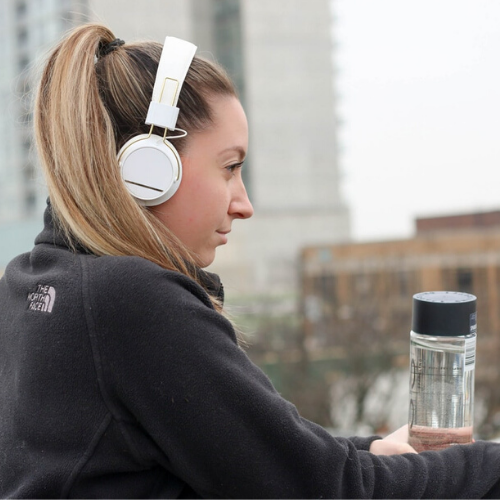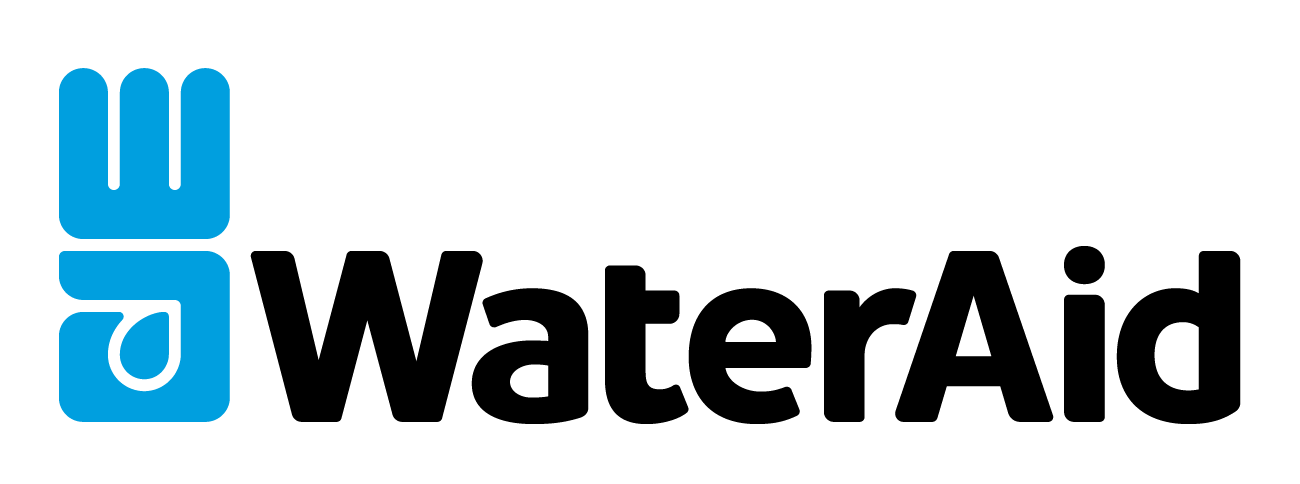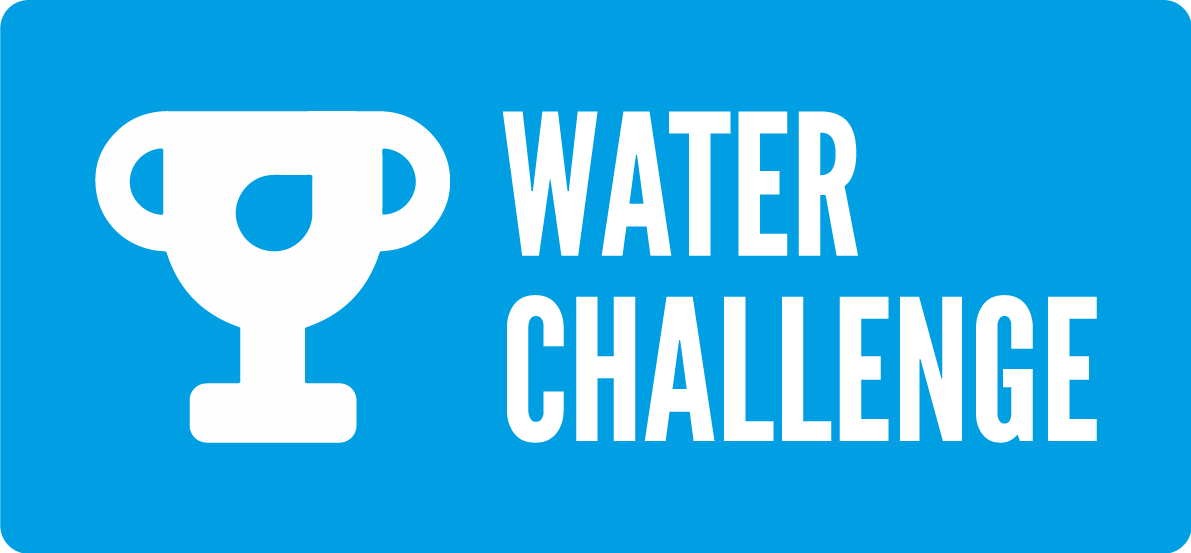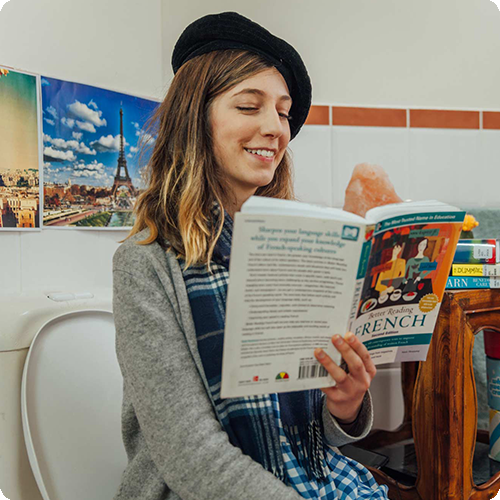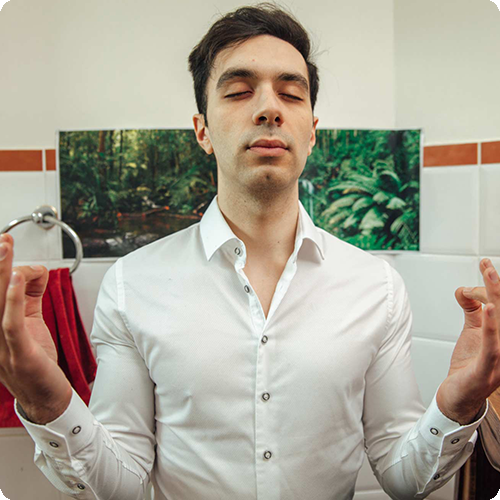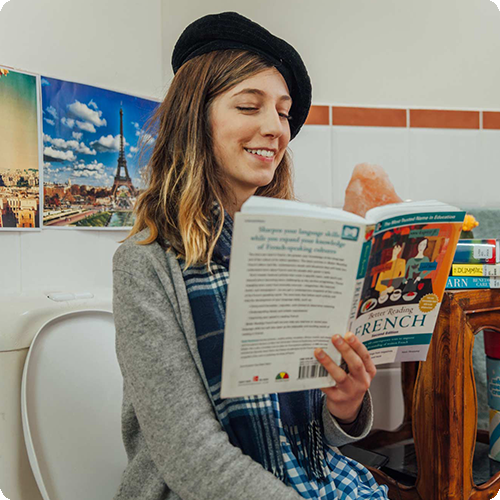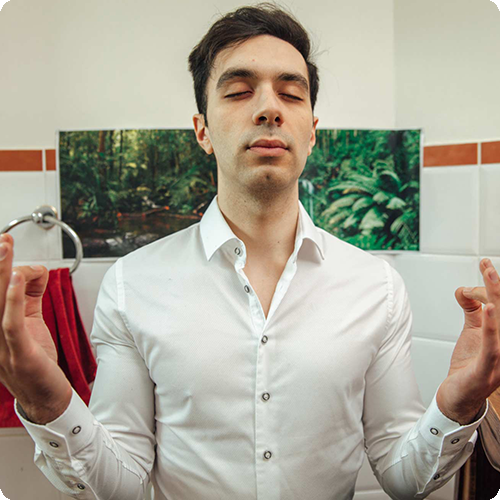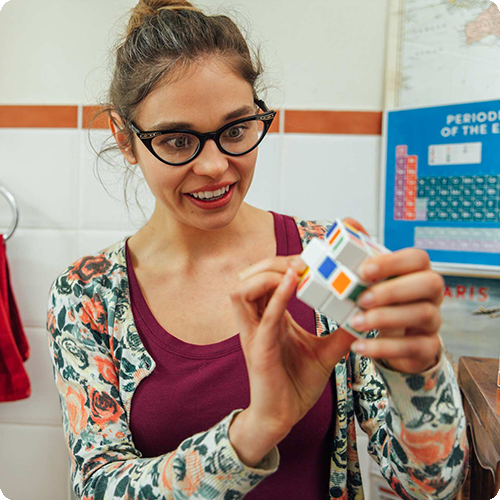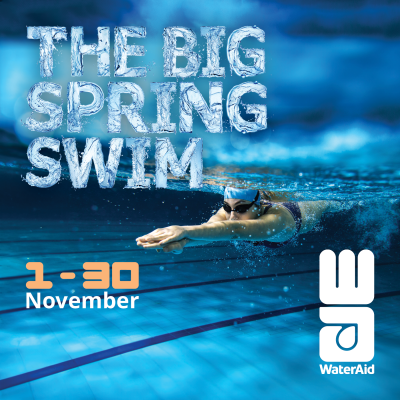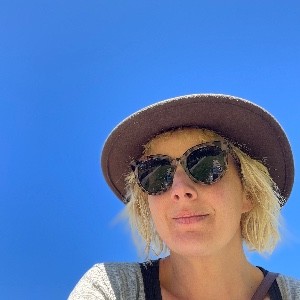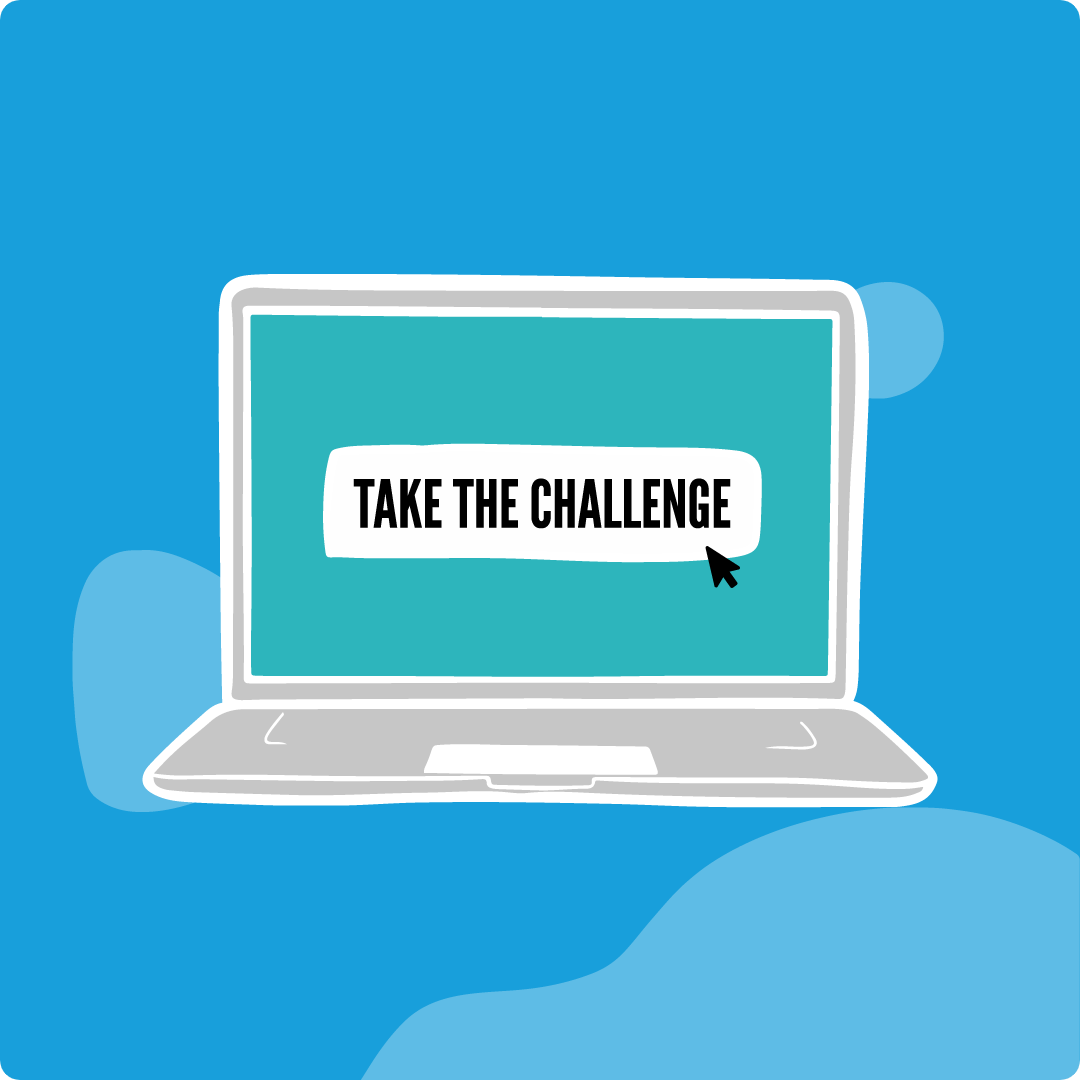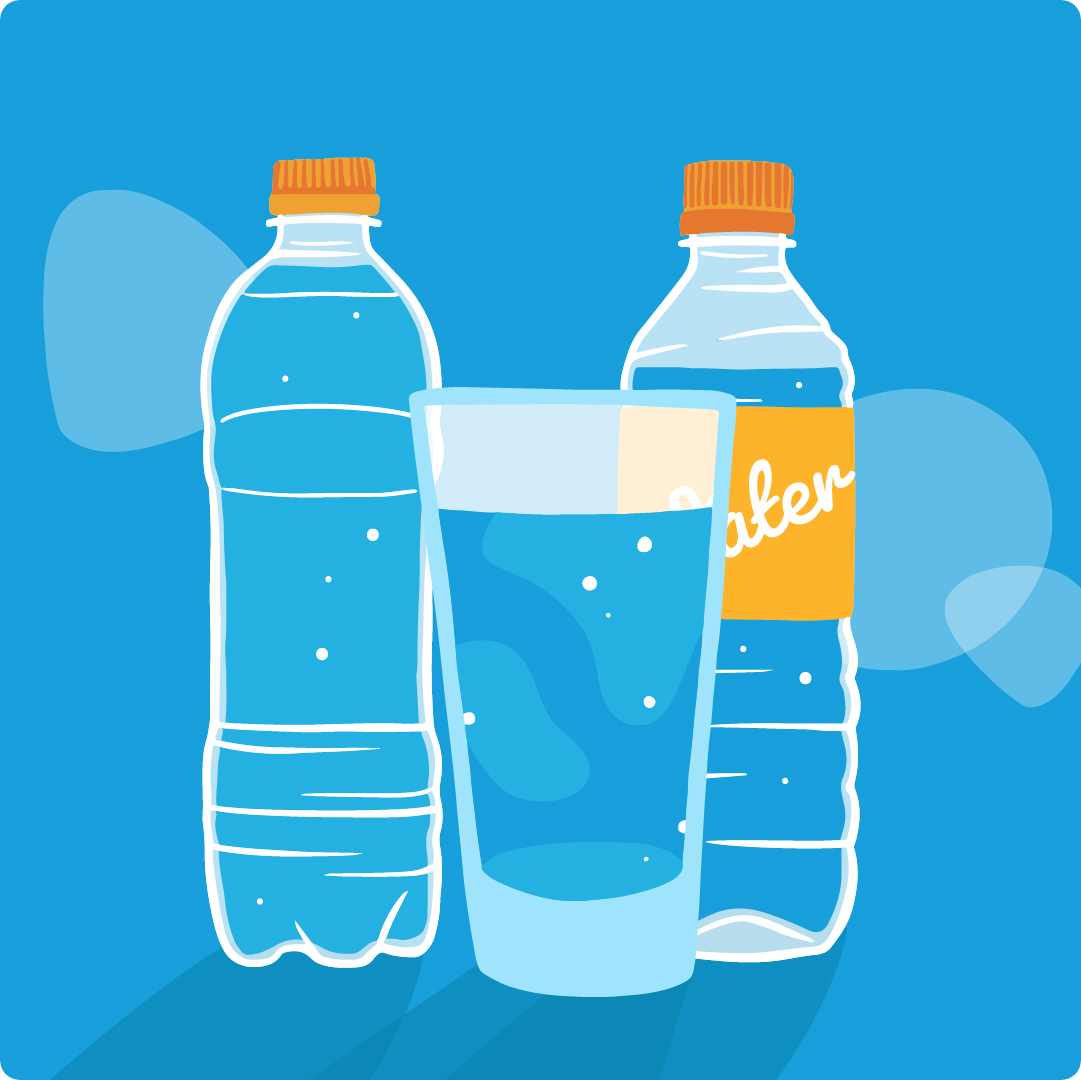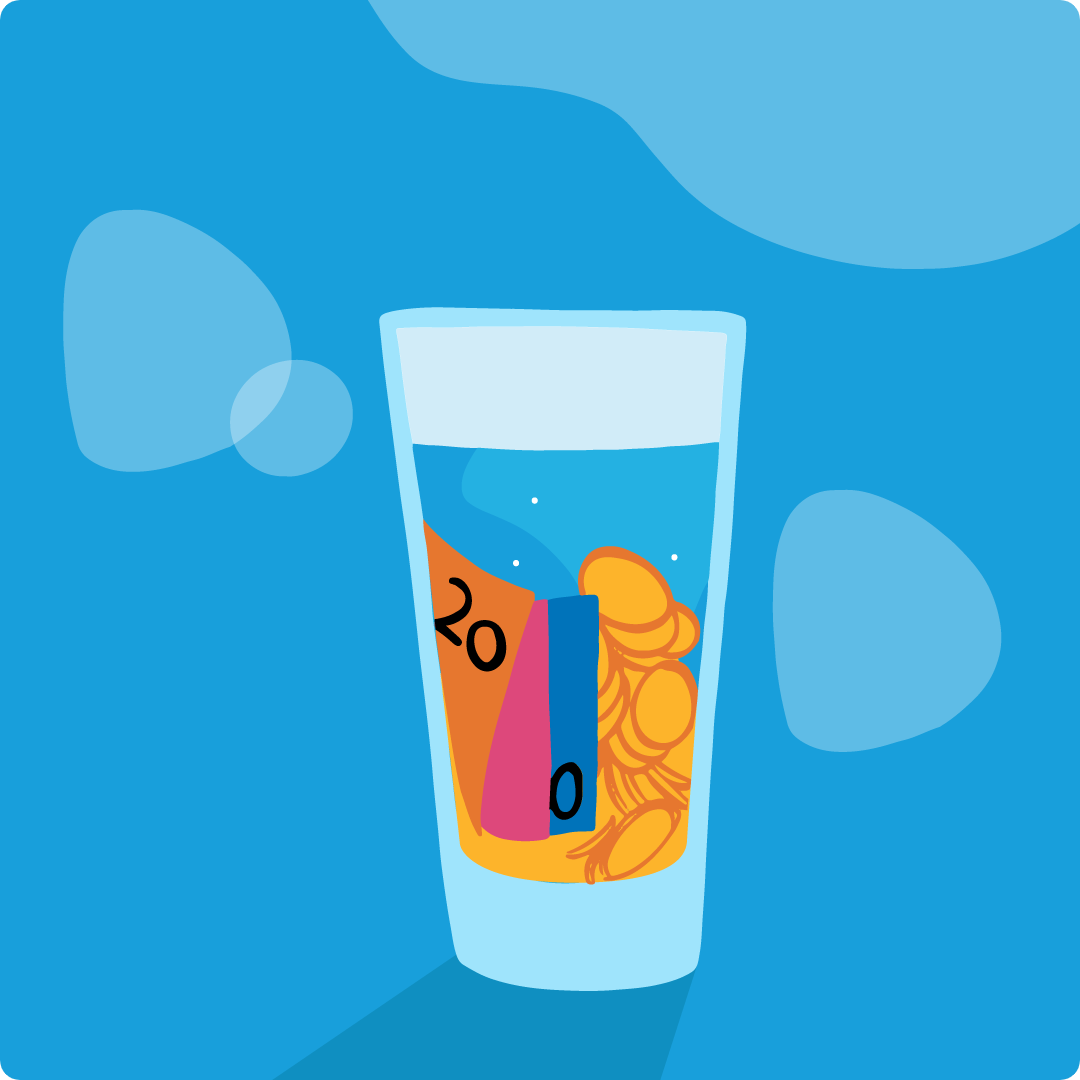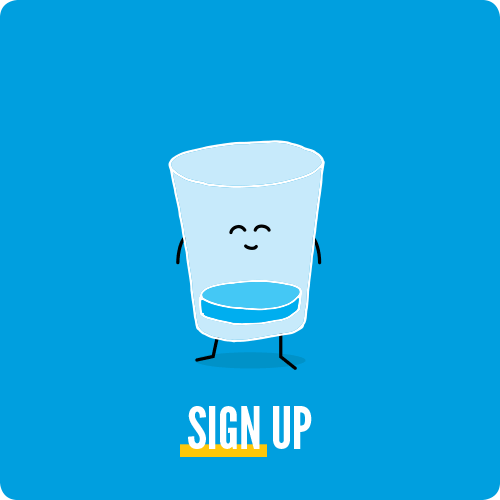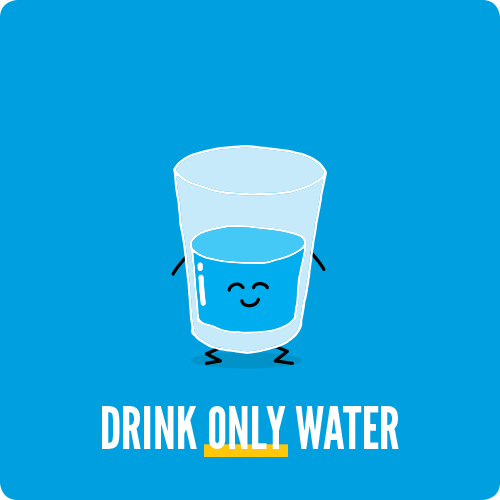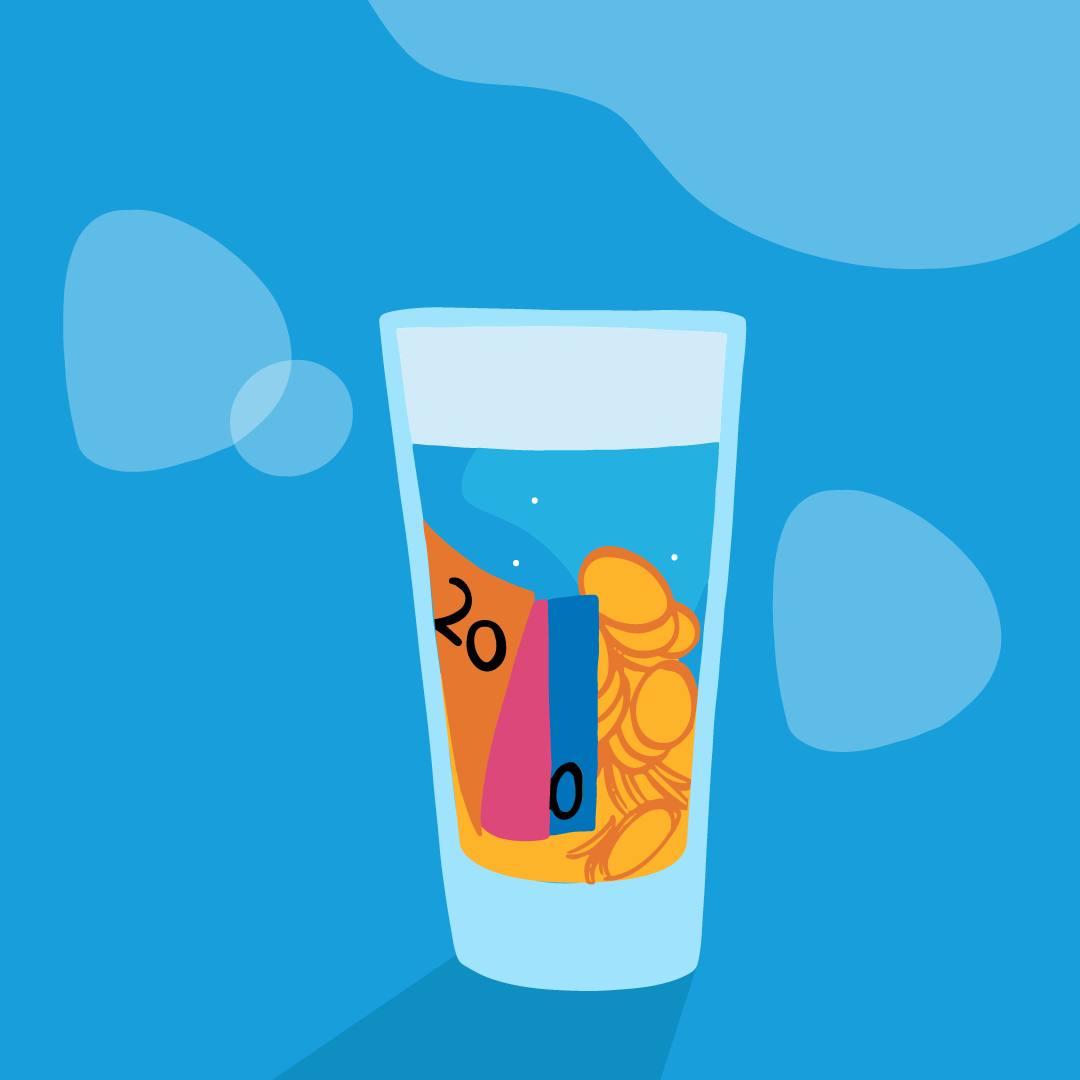Take a Water Challenge this March, improve your health, and help provide lifesaving safe water in some of the world’s poorest communities.
The Water Challenge is WaterAid's annual event, coinciding with World Water Day on 22nd March. We are signing up people like you from all over Australia to take a Water Challenge and ask your friends and family to sponsor you along the way. Every dollar you raise will help some of the world’s poorest families get access to clean, safe water. Join up now, have fun and improve your health for a great cause.
Registration for the Water Challenge is free.
Ticket includes shared banquet dinner, drinks and entertainment including video of the debate on “The Future of Motherhood” (featuring Kathy Lette, Annabel Crabb and more!) which is taking place at the 150 Year Gala Dinner.
For further informationplease contact Simone at the Foundationon simone@royalwomen.org.au or phone (02) 9382 6723

All funds raised through this event will continue to support vital equipment and research needs in the Royal Hospital for Women Newborn Care Centre to help care for premature and critically ill babies.
Thank you for your generous support. If you would like to learn more about the incredible work of Running for Premature Babies, please visit www.runningforprematurebabies.com
VIP toilets for very important lives
Jonathon’s school in Papua New Guinea was at risk of being closed. The School Inspector was not impressed with the elementary and primary school’s sub-standard toilets, which consisted of 12 pit latrines (very basic toilets that are essentially a hole in the ground which separate peoples from their waste) for 414 students.
Through the work of WaterAid and its local partners, the school’s toilets received a major upgrade. Construction began on six VIP latrines (a ventilated improved pit latrine, not a toilet reserved for very important people). By including a vent pipe with a flyscreen, these ‘VIP’ toilets are far safer and less odorous than simple pit latrines as they prevent flies which come into contact with the feces from leaving the pit and thus spreading disease. WaterAid also helped set up a female shower room and 11 handwashing facilities.
As with much of WaterAid’s project work, infrastructure is just one part of the solution. Alongside its partners, WaterAid helped design a strategy for the school on how to maintain toilet cleanliness, and encourage hygienic behaviours such as handwashing. This work involved setting up a committee for water, sanitation and hygiene, who could keep this as a priority going into the future.
And it remains a priority, with WaterAid’s work inspiring the school to take further action. They decided to continue working on this sanitation project, building two more toilets for the primary school.
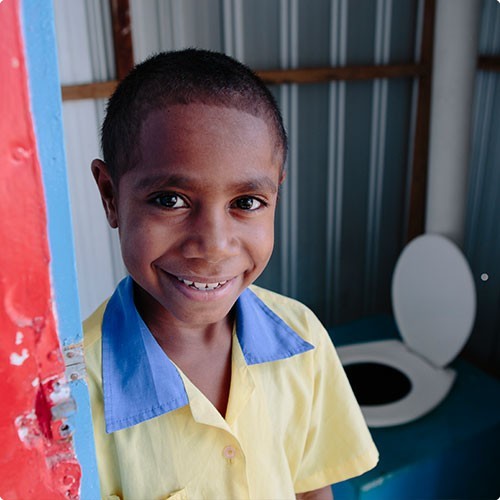
1 in 3 people worldwide don't have access to a decent dunny. What if you could help change that from the comfort of your own toilet?
This November, dedicate your 8 hours on the loo to learning something new and ask your friends to sponsor you.
VIP toilets for very important lives
Jonathon’s school in Papua New Guinea was at risk of being closed. The School Inspector was not impressed with the elementary and primary school’s sub-standard toilets, which consisted of 12 pit latrines (very basic toilets that are essentially a hole in the ground which separate peoples from their waste) for 414 students.
Through the work of WaterAid and its local partners, the school’s toilets received a major upgrade. Construction began on six VIP latrines (a ventilated improved pit latrine, not a toilet reserved for very important people). By including a vent pipe with a flyscreen, these ‘VIP’ toilets are far safer and less odorous than simple pit latrines as they prevent flies which come into contact with the feces from leaving the pit and thus spreading disease. WaterAid also helped set up a female shower room and 11 handwashing facilities.
As with much of WaterAid’s project work, infrastructure is just one part of the solution. Alongside its partners, WaterAid helped design a strategy for the school on how to maintain toilet cleanliness, and encourage hygienic behaviours such as handwashing. This work involved setting up a committee for water, sanitation and hygiene, who could keep this as a priority going into the future.
And it remains a priority, with WaterAid’s work inspiring the school to take further action. They decided to continue working on this sanitation project, building two more toilets for the primary school.

VIP toilets for very important lives
Jonathon’s school in Papua New Guinea was at risk of being closed. The School Inspector was not impressed with the elementary and primary school’s sub-standard toilets, which consisted of 12 pit latrines (very basic toilets that are essentially a hole in the ground which separate peoples from their waste) for 414 students.
Through the work of WaterAid and its local partners, the school’s toilets received a major upgrade. Construction began on six VIP latrines (a ventilated improved pit latrine, not a toilet reserved for very important people). By including a vent pipe with a flyscreen, these ‘VIP’ toilets are far safer and less odorous than simple pit latrines as they prevent flies which come into contact with the feces from leaving the pit and thus spreading disease. WaterAid also helped set up a female shower room and 11 handwashing facilities.
As with much of WaterAid’s project work, infrastructure is just one part of the solution. Alongside its partners, WaterAid helped design a strategy for the school on how to maintain toilet cleanliness, and encourage hygienic behaviours such as handwashing. This work involved setting up a committee for water, sanitation and hygiene, who could keep this as a priority going into the future.
And it remains a priority, with WaterAid’s work inspiring the school to take further action. They decided to continue working on this sanitation project, building two more toilets for the primary school.


What would you do if your closest water source was more than half an hour away? This is a daily reality for millions, but it doesn't have to be.
This March, will you Walk for Water?

Winnovators is WaterAid’s employee development program.
We have 15 teams competing across Australia to solve a real-world water, sanitation and hygiene challenge in India while learning new skills, thinking outside the box and raising valuable funds for WaterAid. You can help them achieve their goal to raise funds for WaterAid’s work.

What would you do if your closest water source was more than half an hour away? This is a daily reality for millions, but it doesn't have to be.
This March, will you Walk for Water?

Winnovators is WaterAid’s employee development program.
Corporate teams across Australia will compete to solve a real-world water, sanitation and hygiene challenge while learning new skills, thinking outside the box and raising valuable funds for WaterAid. You can help them achieve their goal to raise funds for WaterAid’s work.

What would you do if your closest water source was more than half an hour away? This is a daily reality for millions, but it doesn't have to be.
This March, will you Walk for Water?

Winnovators is WaterAid’s employee development program.
Corporate teams across Australia and globally will compete to solve a real-world water, sanitation and hygiene challenge while learning new skills, thinking outside the box and raising valuable funds for WaterAid. You can help them achieve their goal to raise funds for WaterAid’s work.
M.O.O.T.
Massively Open Online Trivia
Online Trivia Event

What would you do if your closest water source was more than half an hour away? This is a daily reality for millions, but it doesn't have to be.
This October, will you Walk, Run or Ride for Water?
Image: WaterAid/Jerry Galea

WaterAid/Adam Ferguson

WaterAid/Adam Ferguson

WaterAid/Tariq Hawari

WaterAid/Tariq Hawari
Sometimes it can feel as though our brains have run out of storage space, and that there’s no more room to fit in new facts and figures. In reality, this is completely false; Scientific American estimates that our brain can hold the equivalent of a million gigabytes worth of memories.
What better way to test this theory out than to spend the month feeding our brains with handy information we can retrieve at a later date. This is your chance to commit to memory something you’ve always wanted to learn – a foreign language, the flags of the world, the periodic table, the lyrics to your favourite hip-hop song! Whatever it is, November is the month to do it and the toilet is the place to do it in.
Download our back-of-toilet-door posters to make your learning easier:
Brain training
- Lumosity (Apple | Android)
- Elevate (Apple | Android)
- Memorado (Apple | Android)
- Mind Games (Apple | Android)
Lessons/courses
- Coursera (Apple | Android)
- Khan Academy (Apple | Android)
- Lynda (Apple | Android)
- TED (Apple | Android)
Language apps
- Duolingo (Apple | Android)
- Busuu (Apple | Android)
- Babbel (Apple | Android)
- AnkiApp Flashcards (Apple | Android)
- SuperMemo (Apple | Android)
AUSLAN
- RIDBC Auslan Tutor Key Signs (Apple | Android)
- Auslan To Go (Apple | Android)
- Learn Auslan (Apple | Android)
- Signbank
Other learning apps
- Learn song lyrics
- Recite Shakespeare
- Improve your maths skills
- Complete Mathematics (Android)
- Learn your periodic table
- Learn how to code
Are there any excellent learning apps or resources you’d like to see on this website? Send through your recommendations to events@wateraid.org.au
If you intend to use your phone while using the toilet, please make sure you read our hygiene instructions.
Lorem ipsum dolor sit amet, consectetur adipiscing elit. Cras ornare, tellus nec sodales mollis, nibh augue euismod nibh, convallis commodo nunc lectus eget odio. Vivamus dictum, neque et rhoncus tristique, ex velit malesuada orci, eget dapibus massa risus sed odio. Integer condimentum nunc consequat erat cursus, nec mattis tortor porta. Aenean viverra nisl non porttitor euismod. Pellentesque tristique suscipit odio a aliquam. Praesent auctor eros at arcu vestibulum dignissim. Vestibulum auctor risus augue, eu feugiat felis fermentum nec. Sed metus sapien, viverra id ante vel, vulputate eleifend urna. Mauris nulla sapien, elementum in fermentum et, hendrerit at nulla. Proin viverra blandit turpis in posuere. Praesent fringilla pulvinar urna in fermentum. Fusce vulputate eleifend sagittis. Nulla imperdiet ultricies nunc, a viverra elit. Sed sagittis eros sed lorem condimentum, eu semper erat cursus. Duis eleifend, diam et congue pharetra, orci enim consectetur odio, id egestas eros sapien nec lorem. In non risus lorem. Morbi laoreet accumsan enim at pharetra. Duis vitae tellus pulvinar tortor ornare interdum non vel neque. In id venenatis justo, eget porta tellus. Pellentesque blandit mauris urna, a laoreet tortor convallis ut.
Lorem ipsum dolor sit amet, consectetur adipiscing elit. Cras ornare, tellus nec sodales mollis, nibh augue euismod nibh, convallis commodo nunc lectus eget odio. Vivamus dictum, neque et rhoncus tristique, ex velit malesuada orci, eget dapibus massa risus sed odio. Integer condimentum nunc consequat erat cursus, nec mattis tortor porta. Aenean viverra nisl non porttitor euismod. Pellentesque tristique suscipit odio a aliquam. Praesent auctor eros at arcu vestibulum dignissim. Vestibulum auctor risus augue, eu feugiat felis fermentum nec. Sed metus sapien, viverra id ante vel, vulputate eleifend urna.
Mauris nulla sapien, elementum in fermentum et, hendrerit at nulla. Proin viverra blandit turpis in posuere. Praesent fringilla pulvinar urna in fermentum. Fusce vulputate eleifend sagittis. Nulla imperdiet ultricies nunc, a viverra elit. Sed sagittis eros sed lorem condimentum, eu semper erat cursus. Duis eleifend, diam et congue pharetra, orci enim consectetur odio, id egestas eros sapien nec lorem. In non risus lorem. Morbi laoreet accumsan enim at pharetra. Duis vitae tellus pulvinar tortor ornare interdum non vel neque. In id venenatis justo, eget porta tellus. Pellentesque blandit mauris urna, a laoreet tortor convallis ut.

Lorem ipsum dolor sit amet, consectetur adipiscing elit. Sed interdum sagittis viverra. Ut ut velit mollis, porttitor augue ac, condimentum nisl. Donec scelerisque lobortis iaculis. Donec ultrices enim ut nibh pulvinar, et cursus tortor finibus. Sed sit amet magna porta, vehicula tortor posuere, vulputate nunc. Pellentesque mattis, nulla sit amet maximus mollis, felis urna dictum nulla, ut faucibus massa mauris quis nunc. Donec molestie eu urna vitae tincidunt. Mauris hendrerit justo vitae nibh venenatis egestas. Nam in ex id quam pulvinar fringilla nec a elit. Cras at eros porta, rhoncus magna at, tempor enim. Phasellus sodales vehicula magna.
Heading 1
Lorem ipsum dolor sit amet, consectetur adipiscing elit. Sed interdum sagittis viverra. Ut ut velit mollis, porttitor augue ac, condimentum nisl. Donec scelerisque lobortis iaculis. Donec ultrices enim ut nibh pulvinar, et cursus tortor finibus. Sed sit amet magna porta, vehicula tortor posuere, vulputate nunc. Pellentesque mattis, nulla sit amet maximus mollis, felis urna dictum nulla, ut faucibus massa mauris quis nunc. Donec molestie eu urna vitae tincidunt. Mauris hendrerit justo vitae nibh venenatis egestas. Nam in ex id quam pulvinar fringilla nec a elit. Cras at eros porta, rhoncus magna at, tempor enim. Phasellus sodales vehicula magna.
Lorem ipsum dolor sit amet, consectetur adipiscing elit. Sed interdum sagittis viverra. Ut ut velit mollis, porttitor augue ac, condimentum nisl. Donec scelerisque lobortis iaculis. Donec ultrices enim ut nibh pulvinar, et cursus tortor finibus. Sed sit amet magna porta, vehicula tortor posuere, vulputate nunc. Pellentesque mattis, nulla sit amet maximus mollis, felis urna dictum nulla, ut faucibus massa mauris quis nunc. Donec molestie eu urna vitae tincidunt. Mauris hendrerit justo vitae nibh venenatis egestas. Nam in ex id quam pulvinar fringilla nec a elit. Cras at eros porta, rhoncus magna at, tempor enim. Phasellus sodales vehicula magna.
Lorem ipsum dolor sit amet, consectetur adipiscing elit. Vestibulum consectetur libero lacus, ut fringilla lectus consectetur at. Donec sapien ante, condimentum quis sagittis id, eleifend nec orci. Donec ac turpis ex. Praesent vitae metus eu erat molestie elementum. Vivamus ac sem vel lorem consequat pretium. Integer tempus velit leo, eu euismod dolor lobortis vel. Mauris in vulputate orci, nec bibendum orci.
Quisque dapibus orci vitae metus maximus porta. Cras quis venenatis dui. Morbi tristique augue erat. Maecenas arcu sem, faucibus ut accumsan eu, molestie ac odio. Pellentesque vitae sem nibh. Aliquam ultrices libero iaculis est vehicula, a viverra eros mattis. Suspendisse euismod arcu non tellus auctor, in euismod magna euismod.
Duis vel bibendum ex. Nam commodo, neque eget lobortis dignissim, ipsum lacus feugiat ex, sed aliquam sapien metus eget ante. Sed ac vestibulum orci. Fusce aliquam purus malesuada nisi gravida pellentesque. Sed vulputate ultricies nisl ut tempus. Mauris efficitur ullamcorper tellus. Praesent viverra, nibh ac congue tristique, nisl ex mollis ex, sed finibus ligula eros rhoncus purus. Aliquam finibus sit amet est a vehicula. Nam vel interdum nisi. Duis ultrices pulvinar tellus, vitae vestibulum lorem molestie in. Nam non consequat dolor. Curabitur dictum, ipsum non tempus tincidunt, augue sapien ornare lorem, et tristique quam sem sed nunc.
Please check out my photos below
Lorem ipsum dolor sit amet, consectetur adipiscing elit. Fusce sit amet urna quis enim volutpat efficitur. Nam magna velit, bibendum id ullamcorper non, pretium at ante. Duis molestie justo sit amet erat dictum cursus. Ut hendrerit libero vel ornare tempus. Pellentesque vel tortor id sapien dignissim hendrerit. Donec hendrerit libero et augue egestas, vel dictum nibh tempus. Integer ac consequat urna. Sed in erat vel justo pulvinar fringilla. Pellentesque eu interdum dui. Fusce gravida elit eget tellus cursus, lobortis porta erat pharetra. Donec imperdiet volutpat consequat. Nulla velit diam, posuere eget tortor in, consequat luctus diam. Etiam dignissim sagittis risus, ac pellentesque massa mollis vehicula. Quisque aliquam elementum tellus sit amet sollicitudin. In non ultricies ligula, placerat cursus neque. Proin facilisis diam sed dolor fringilla cursus.
Lorem ipsum dolor sit amet, consectetur adipiscing elit. Fusce sit amet urna quis enim volutpat efficitur. Nam magna velit, bibendum id ullamcorper non, pretium at ante. Duis molestie justo sit amet erat dictum cursus. Ut hendrerit libero vel ornare tempus. Pellentesque vel tortor id sapien dignissim hendrerit. Donec hendrerit libero et augue egestas, vel dictum nibh tempus. Integer ac consequat urna. Sed in erat vel justo pulvinar fringilla. Pellentesque eu interdum dui. Fusce gravida elit eget tellus cursus, lobortis porta erat pharetra. Donec imperdiet volutpat consequat. Nulla velit diam, posuere eget tortor in, consequat luctus diam. Etiam dignissim sagittis risus, ac pellentesque massa mollis vehicula. Quisque aliquam elementum tellus sit amet sollicitudin. In non ultricies ligula, placerat cursus neque. Proin facilisis diam sed dolor fringilla cursus.
Lorem ipsum dolor sit amet, consectetur adipiscing elit. Fusce sit amet urna quis enim volutpat efficitur. Nam magna velit, bibendum id ullamcorper non, pretium at ante. Duis molestie justo sit amet erat dictum cursus. Ut hendrerit libero vel ornare tempus. Pellentesque vel tortor id sapien dignissim hendrerit. Donec hendrerit libero et augue egestas, vel dictum nibh tempus. Integer ac consequat urna. Sed in erat vel justo pulvinar fringilla. Pellentesque eu interdum dui. Fusce gravida elit eget tellus cursus, lobortis porta erat pharetra. Donec imperdiet volutpat consequat. Nulla velit diam, posuere eget tortor in, consequat luctus diam. Etiam dignissim sagittis risus, ac pellentesque massa mollis vehicula. Quisque aliquam elementum tellus sit amet sollicitudin. In non ultricies ligula, placerat cursus neque. Proin facilisis diam sed dolor fringilla cursus.

Believe it or not, but your toilet can be a really convenient place to learn. It’s already part of your routine, and it’s often a quiet place, free from distractions.
If you’re the kind of person who likes to use their phone on the toilet, then it’s pretty easy to replace your Facebook scrolling with Wikipedia rabbit holes or using a learning app. And if you’re more of a hands-free kind of toilet user, then maybe you’d prefer to spend your toilet time looking at a poster on the back of your door (just like primary school!). Many of us learned our times tables and revised for our year 12 exams on the toilet door, so what’s stopping you from using those same tactics again?

Photo: wemadethat.com.au
It’s up to you what you’d like to learn on the loo, but we’ve come up with three broad categories to give you a few ideas:
MEMORISE
Laura has been longing to learn a new language. This November, she wants to start learning French on the loo.
MEDITATE
Matthew has been meaning to try meditation. This November, Matthew will use his toilet time to practice mindfulness.
MASTER
Tabitha has converted her lavatory into a little learning lab. This November, she plans on mastering the Rubik's cube.
You’ve probably heard about all the entrepreneurs, business leaders and celebrities who meditate.
You’ve probably been told you should meditate too.
We’re guessing you never got around to it.
Finding the time to meditate can be difficult. Fortunately, we can always find time to visit the toilet. Learn on the Loo is your chance to put those two things together.
We’re inviting you to transform the most peaceful room of the house into your personal meditation space.
It all sounds like a good idea, but where do you start?
Scroll down to see a number of different meditation and mindfulness apps you can download to get you started, or download our 30-day mindfulness guide to stick on the back of your toilet door.
Not only can the toilet can be a place of mindfulness, but a haven of spirituality as well. You may decide to use your daily toilet time for quiet prayer and dedication or the reading of religious texts.
There are a number of different meditation and mindfulness apps you can use to help you throughout the month. These include:
- Smiling Mind (Apple | Android)
- Headspace (Apple | Android)
- Omwana (Apple | Android)
- Calm (Apple | Android)
- Breethe (Apple | Android)
If you intend to use your phone while using the toilet, please make sure you read our hygiene instructions.
Business author Josh Kaufman estimates that it only takes 20 hours to go from “knowing nothing to being pretty good” at something. It’s unlikely you’ll clock up 20 hours in November alone (unless you like spending 40 minutes inside the toilet every day), but 10-15 minute bursts here and there will still get you a fair chunk of the way.
So what new skill can you begin to master on the can? You could try something physical like knitting or crocheting… and by the end of the month, you may have even made someone a Christmas gift! Or you could test your brain by solving a Rubik’s cube or becoming a Sudoku super-sleuth. Alternatively, get creative with toilet paper – practise writing on it with your non-preferred hand, turn it into origami, or learn how to juggle those spare rolls sitting on the shelf.
Remember to stay hygienic while taking your Learn on the Loo challenge. If you intend to take anything into the toilet with you, we recommend you read our hygiene instructions.
Photo: wemadethat.com.au
In Kaufman’s TED talk, he shares a few tips on how to best use your learning and practising time:
- Deconstruct the skill into smaller manageable parts, and practise one at a time
- Don’t procrastinate by overloading yourself with pre-reading before you begin practising. Learn just enough so that you know how to self-correct as you practise
- Remove practical barriers to you having the time and focus to practise
- Practise the skill
Race to the top of the Learn on the Loo leaderboard by creating a fundraising page today.
Believe it or not, but your toilet can be a really convenient place to learn. It’s already part of your routine, and it’s often a quiet place, free from distractions.
If you’re the kind of person who likes to use their phone on the toilet, then it’s pretty easy to replace your Facebook scrolling with Wikipedia rabbit holes or using a learning app. And if you’re more of a hands-free kind of toilet user, then maybe you’d prefer to spend your toilet time looking at a poster on the back of your door (just like primary school!). Many of us learned our times tables and revised for our year 12 exams on the toilet door, so what’s stopping you from using those same tactics again?

Photo: wemadethat.com.au
It’s up to you what you’d like to learn on the loo, but we’ve come up with three broad categories to give you a few ideas:
MEMORISE
Laura has been longing to learn a new language. This November, she wants to start learning French on the loo.
MEDITATE
Matthew has been meaning to try meditation. This November, Matthew will use his toilet time to practise mindfulness.
MASTER
Tabitha has converted her lavatory into a little learning lab. This November, she plans on mastering the Rubik's cube.
You’ve probably heard about all the entrepreneurs, business leaders and celebrities who meditate.
You’ve probably been told you should meditate too.
We’re guessing you never got around to it.
Finding the time to meditate can be difficult. Fortunately, we can always find time to visit the toilet. Learn on the Loo is your chance to put those two things together.
We’re inviting you to transform the most peaceful room of the house into your personal meditation space.
It all sounds like a good idea, but where do you start?
Scroll down to see a number of different meditation and mindfulness apps you can download to get you started, or download our 30-day mindfulness guide to stick on the back of your toilet door.
Not only can the toilet can be a place of mindfulness, but a haven of spirituality as well. You may decide to use your daily toilet time for quiet prayer and dedication or the reading of religious texts.
There are a number of different meditation and mindfulness apps you can use to help you throughout the month. These include:
- Smiling Mind (Apple | Android)
- Headspace (Apple | Android)
- Omwana (Apple | Android)
- Calm (Apple | Android)
- Breethe (Apple | Android)
If you intend to use your phone while using the toilet, please make sure you read our hygiene instructions.
Sometimes it can feel as though our brains have run out of storage space, and that there’s no more room to fit in new facts and figures. In reality, this is completely false; Scientific American estimates that our brain can hold the equivalent of a million gigabytes worth of memories.
What better way to test this theory out than to spend the month feeding our brains with handy information we can retrieve at a later date. This is your chance to commit to memory something you’ve always wanted to learn – a foreign language, the flags of the world, the periodic table, the lyrics to your favourite hip-hop song! Whatever it is, November is the month to do it and the toilet is the place to do it in.
Download our back-of-toilet-door posters to make your learning easier:
Brain training
- Lumosity (Apple | Android)
- Elevate (Apple | Android)
- Memorado (Apple | Android)
- Mind Games (Apple | Android)
Lessons/courses
- Coursera (Apple | Android)
- Khan Academy (Apple | Android)
- Lynda (Apple | Android)
- TED (Apple | Android)
Language apps
- Duolingo (Apple | Android)
- Busuu (Apple | Android)
- Babbel (Apple | Android)
- AnkiApp Flashcards (Apple | Android)
- SuperMemo (Apple | Android)
AUSLAN
- RIDBC Auslan Tutor Key Signs (Apple | Android)
- Auslan To Go (Apple | Android)
- Learn Auslan (Apple | Android)
- Signbank
Other learning apps
- Learn song lyrics
- Recite Shakespeare
- Improve your maths skills
- Complete Mathematics (Android)
- Learn your periodic table
- Learn how to code
Are there any excellent learning apps or resources you’d like to see on this website? Send through your recommendations to events@wateraid.org.au
If you intend to use your phone while using the toilet, please make sure you read our hygiene instructions.
Business author Josh Kaufman estimates that it only takes 20 hours to go from “knowing nothing to being pretty good” at something. It’s unlikely you’ll clock up 20 hours in November alone (unless you like spending 40 minutes inside the toilet every day), but 10-15 minute bursts here and there will still get you a fair chunk of the way.
So what new skill can you begin to master on the can? You could try something physical like knitting or crocheting… and by the end of the month, you may have even made someone a Christmas gift! Or you could test your brain by solving a Rubik’s cube or becoming a Sudoku super-sleuth. Alternatively, get creative with toilet paper – practise writing on it with your non-preferred hand, turn it into origami, or learn how to juggle those spare rolls sitting on the shelf.
Remember to stay hygienic while taking your Learn on the Loo challenge. If you intend to take anything into the toilet with you, we recommend you read our hygiene instructions.
Photo: wemadethat.com.au
In Kaufman’s TED talk, he shares a few tips on how to best use your learning and practising time:
- Deconstruct the skill into smaller manageable parts, and practise one at a time
- Don’t procrastinate by overloading yourself with pre-reading before you begin practising. Learn just enough so that you know how to self-correct as you practise
- Remove practical barriers to you having the time and focus to practise
- Practise the skill
Race to the top of the Learn on the Loo leaderboard by creating a fundraising page today.
Believe it or not, but your toilet can be a really convenient place to learn. It’s already part of your routine, and it’s often a quiet place, free from distractions.
If you’re the kind of person who likes to use their phone on the toilet, then it’s pretty easy to replace your Facebook scrolling with Wikipedia rabbit holes or using a learning app. And if you’re more of a hands-free kind of toilet user, then maybe you’d prefer to spend your toilet time looking at a poster on the back of your door (just like primary school!). Many of us learned our times tables and revised for our year 12 exams on the toilet door, so what’s stopping you from using those same tactics again?

Photo: wemadethat.com.au
It’s up to you what you’d like to learn on the loo, but we’ve come up with three broad categories to give you a few ideas:
MEMORISE
Laura has been longing to learn a new language. This November, she wants to start learning French on the loo.
MEDITATE
Matthew has been meaning to try meditation. This November, Matthew will use his toilet time to practise mindfulness.
MASTER
Tabitha has converted her lavatory into a little learning lab. This November, she plans on mastering the Rubik's cube.
You’ve probably heard about all the entrepreneurs, business leaders and celebrities who meditate.
You’ve probably been told you should meditate too.
We’re guessing you never got around to it.
Finding the time to meditate can be difficult. Fortunately, we can always find time to visit the toilet. Learn on the Loo is your chance to put those two things together.
We’re inviting you to transform the most peaceful room of the house into your personal meditation space.
It all sounds like a good idea, but where do you start?
Scroll down to see a number of different meditation and mindfulness apps you can download to get you started, or download our 30-day mindfulness guide to stick on the back of your toilet door.
Not only can the toilet can be a place of mindfulness, but a haven of spirituality as well. You may decide to use your daily toilet time for quiet prayer and dedication or the reading of religious texts.
There are a number of different meditation and mindfulness apps you can use to help you throughout the month. These include:
- Smiling Mind (Apple | Android)
- Headspace (Apple | Android)
- Omwana (Apple | Android)
- Calm (Apple | Android)
- Breethe (Apple | Android)
If you intend to use your phone while using the toilet, please make sure you read our hygiene instructions.
Sometimes it can feel as though our brains have run out of storage space, and that there’s no more room to fit in new facts and figures. In reality, this is completely false; Scientific American estimates that our brain can hold the equivalent of a million gigabytes worth of memories.
What better way to test this theory out than to spend the month feeding our brains with handy information we can retrieve at a later date. This is your chance to commit to memory something you’ve always wanted to learn – a foreign language, the flags of the world, the periodic table, the lyrics to your favourite hip-hop song! Whatever it is, November is the month to do it and the toilet is the place to do it in.
Download our back-of-toilet-door posters to make your learning easier:
Brain training
- Lumosity (Apple | Android)
- Elevate (Apple | Android)
- Memorado (Apple | Android)
- Mind Games (Apple | Android)
Lessons/courses
- Coursera (Apple | Android)
- Khan Academy (Apple | Android)
- Lynda (Apple | Android)
- TED (Apple | Android)
Language apps
- Duolingo (Apple | Android)
- Busuu (Apple | Android)
- Babbel (Apple | Android)
- AnkiApp Flashcards (Apple | Android)
- SuperMemo (Apple | Android)
AUSLAN
- RIDBC Auslan Tutor Key Signs (Apple | Android)
- Auslan To Go (Apple | Android)
- Learn Auslan (Apple | Android)
- Signbank
Other learning apps
- Learn song lyrics
- Recite Shakespeare
- Improve your maths skills
- Complete Mathematics (Android)
- Learn your periodic table
- Learn how to code
Are there any excellent learning apps or resources you’d like to see on this website? Send through your recommendations to events@wateraid.org.au
If you intend to use your phone while using the toilet, please make sure you read our hygiene instructions.
Business author Josh Kaufman estimates that it only takes 20 hours to go from “knowing nothing to being pretty good” at something. It’s unlikely you’ll clock up 20 hours in November alone (unless you like spending 40 minutes inside the toilet every day), but 10-15 minute bursts here and there will still get you a fair chunk of the way.
So what new skill can you begin to master on the can? You could try something physical like knitting or crocheting… and by the end of the month, you may have even made someone a Christmas gift! Or you could test your brain by solving a Rubik’s cube or becoming a Sudoku super-sleuth. Alternatively, get creative with toilet paper – practise writing on it with your non-preferred hand, turn it into origami, or learn how to juggle those spare rolls sitting on the shelf.
Remember to stay hygienic while taking your Learn on the Loo challenge. If you intend to take anything into the toilet with you, we recommend you read our hygiene instructions.
Photo: wemadethat.com.au
In Kaufman’s TED talk, he shares a few tips on how to best use your learning and practising time:
- Deconstruct the skill into smaller manageable parts, and practise one at a time
- Don’t procrastinate by overloading yourself with pre-reading before you begin practising. Learn just enough so that you know how to self-correct as you practise
- Remove practical barriers to you having the time and focus to practise
- Practise the skill
Race to the top of the Water Challenge leaderboard by creating a fundraising page today
Are you in a team? Here's how the teams are ranked:
Find out which fundraisers are leading the way
Looking for Sydney Water? Visit their fundraising page here.
Find out who is leading the way with their fundraising
Race to the top of the Walk for Water leaderboard by creating a fundraising page today
Are you in a team? Here's how the teams are ranked:
Find out who is leading the way with their fundraising
Race to the top of the Water Challenge leaderboard by creating a fundraising page today
Are you in a team? Here's how the teams are ranked:
Race to the top of the Walk for Water leaderboard by creating a fundraising page today
Are you in a team? Here's how the teams are ranked:
Find out who is leading the way with their fundraising
Find out which fundraisers are leading the way
Race to the top of the Water Challenge leaderboard by creating a fundraising page today
Are you in a team? Here's how the teams are ranked:
Race to the top of the Water Challenge leaderboard by creating a fundraising page today
Are you in a team? Here's how the teams are ranked:
Race to the top of the Water Challenge leaderboard by creating a fundraising page today
Are you in a team? Here's how the teams are ranked:
Race to the top of the Walk for Water leaderboard by creating a fundraising page today
Are you in a team? Here's how the teams are ranked:
Find out which fundraisers are leading the way
Find out who is leading the way with their fundraising
Race to the top of the M.O.O.T. leaderboard by creating a fundraising page today
Are you in a team? Here's how the teams are ranked:
Race to the top of the Walk for Water leaderboard by creating a fundraising page today
Are you in a team? Here's how the teams are ranked:
(Teams will appear when they begin fundraising)
Race to the top of the Water Challenge leaderboard by creating a fundraising page today
Are you in a team? Here's how the teams are ranked:
Race to the top of the Water Challenge leaderboard by creating a fundraising page today
Are you in a team? Here's how the teams are ranked:
Leaderboard
Find out which fundraisers are leading the way
Race to the top of the Water Challenge leaderboard by creating a fundraising page today
Are you in a team? Here's how the teams are ranked:
Leaderboard
Find out which fundraisers are leading the way
Race to the top of the Water Challenge leaderboard by creating a fundraising page today
Are you in a team? Here's how the teams are ranked:
Leaderboard
Find out which fundraisers are leading the way
Leaderboard
Find out which fundraisers are leading the way

| What can you do on the loo? |
| Click "Next idea" for more Learn on the Loo ideas |
So what can I learn on the loo?
| What can you do on the loo? |
| Click "Next idea" for more Learn on the Loo ideas |
| What can you do on the loo? |
| Click "Next idea" for more Learn on the Loo ideas |
Race to the top of the Walk for Water leaderboard by creating a fundraising page today
Race to the top of the Walk for Water leaderboard by creating a fundraising page today
Race to the top of the Walk for Water leaderboard by creating a fundraising page today
Race to the top of the Big Spring Swim leaderboard by creating a fundraising page today
Race to the top of the Walk for Water leaderboard by creating a fundraising page today
Race to the top of the Big Spring Swim leaderboard by creating a fundraising page today
How do I add a question?
It's really easy! Simply use the FAQs row when building up your page to give detailed answers to the most commonly asked questions about your event.
Why are we raising money for toilets? Because 1 in 3 people worldwide still don’t have access to a decent toilet.
Every dollar you raise through Learn on the Loo can help WaterAid change that. In fact, for just $40, we could help a family build their own toilet. Find out more about WaterAid's work here
How the Water Challenge works

Making water your only beverage means resisting your favourite drinks. That means saying no to coffee, beer, wine, juice, soft drinks and tea for 31 days.
Sign up today!

Where do you draw the line between water and tea? Is soup a drink? Are days off permitted?
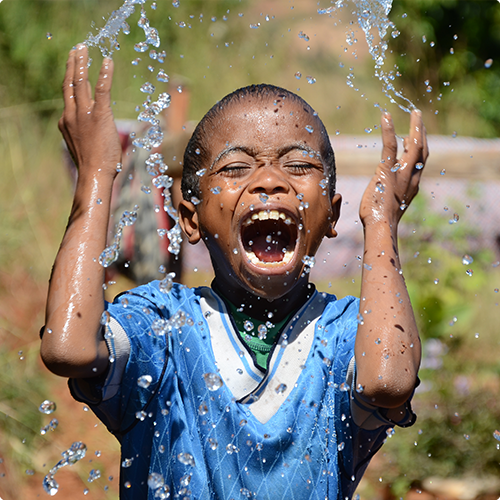
Image: WaterAid/Ernest Randriarimalala
Ask your friends to sponsor you for taking the Water Challenge. Funds raised help WaterAid reach people who don’t have access to clean water.
Find out our top fundraising tips here
How Walk for Water works

Image: Sydney Water
10,000 steps is the equivalent of 100 minutes of walking or 8 kilometres. Track your steps using a WaterAid pedometer, which you can request after you sign up.
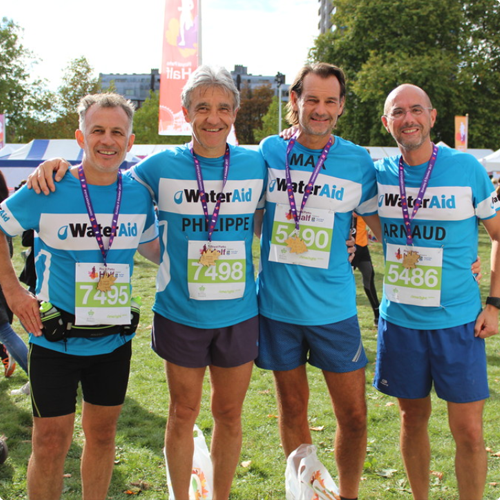
Image: WaterAid/Brendan Foster
Walk for Water is a great activity to do with a larger community.
Contact us if you’d like help getting your whole workplace or school community involved
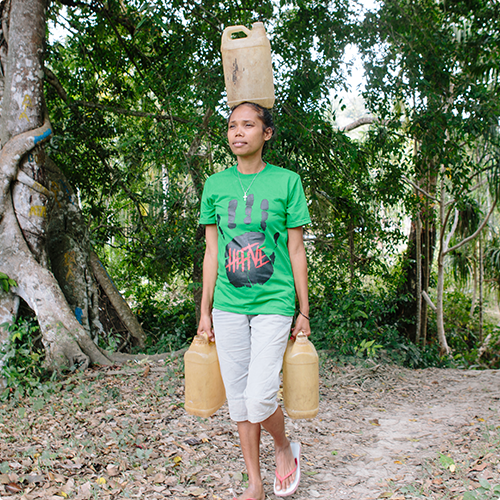
Image: WaterAid/Tom Greenwood
Ask your friends to sponsor you as you Walk for Water. Funds raised will help WaterAid reach people who have limited access to clean water sources.
How do I add a question?
It's really easy! Simply use the FAQs row when building up your page to give detailed answers to the most commonly asked questions about your event.
The water crisis
1 in 9 people worldwide still don’t have access to clean water close to home. For hundreds of millions of people, especially women and girls, that means long, dangerous and physically painful walks to collect water from sources that could be filthy.
WaterAid is committed to helping communities gain access to clean water sources close to home, enabling women and girls to spend more of their time going to school, seeking employment, looking after children, and engaging in leisure activities.
Image: WaterAid/Andrew McConnell
How Walk for Water works

Image: Sydney Water
10,000 steps is the equivalent of 100 minutes of walking or 8 kilometres. Track your steps using a WaterAid pedometer, which you can request after you sign up.

Image: WaterAid/Brendan Foster
Walk for Water is a great activity to do with a larger community.
Contact us if you’d like help getting your whole workplace or school community involved

Image: WaterAid/Tom Greenwood
Ask your friends to sponsor you as you Walk for Water. Funds raised will help WaterAid reach people who have limited access to clean water sources.
How Walk for Water works

Image: Sydney Water
10,000 steps is the equivalent of 100 minutes of walking or 8 kilometres. Track your steps using a WaterAid pedometer, which you can request after you sign up.

Image: WaterAid/Brendan Foster
Walk for Water is a great activity to do with a larger community.
Contact us if you’d like help getting your whole workplace or school community involved

Image: WaterAid/Tom Greenwood
Ask your friends to sponsor you as you Walk for Water. Funds raised will help WaterAid reach people who have limited access to clean water sources.
How does Walk for Water work?

Sign up and create your team
What will you do for water?
Walk
Run
Ride

Get others involved
Walk for Water is so much more fun when you are part of a team. So get your work mates, family and friends together to join you on the journey.

Get sponsors
Ask your work mates and friends to sponsor you as you Walk for Water. Funds raised will help WaterAid reach people who have limited access to clean water sources.
How do I add a question?
It's really easy! Simply use the FAQs row when building up your page to give detailed answers to the most commonly asked questions about your event.
The water crisis
1 in 9 people worldwide still don’t have access to clean water close to home. For hundreds of millions of people, especially women and girls, that means long, dangerous and physically painful walks to collect water from sources that could be filthy.
WaterAid is committed to helping communities gain access to clean water sources close to home, enabling women and girls to spend more of their time going to school, seeking employment, looking after children, and engaging in leisure activities.
Image: WaterAid/Andrew McConnell
How the Water Challenge works
STEP 3
Fundraise! Share your page with family and friends and help provide water to those without.
Fundraise!
The water crisis
1 in 9 people worldwide still don’t have access to clean water close to home. For hundreds of millions of people, especially women and girls, that means long, dangerous and physically painful walks to collect water from sources that could be filthy.
WaterAid is committed to helping communities gain access to clean water sources close to home, enabling women and girls to spend more of their time going to school, seeking employment, looking after children, and engaging in leisure activities.
Image: WaterAid/Andrew McConnell
Where the funds go
The funds you raise through Walk for Water help WaterAid reach people all over the world with clean water.
785 million people in the world – one in ten – do not have clean water close to home. For hundreds of millions of people, especially women and girls, that means long, dangerous and physically painful walks to collect water from sources that could be filthy.
WaterAid is committed to helping communities gain access to clean water sources close to home, enabling women and girls to spend more of their time going to school, seeking employment, looking after children, and engaging in leisure activities.
Image: WaterAid/Andrew McConnell
How the Water Challenge works
STEP 3
Fundraise! Share your page with family and friends and help provide water to those without.
Fundraise!
How the Water Challenge works
STEP 3
Fundraise! Share your page with family and friends and help provide water to those without.
Fundraise!
How do I add a question?
It's really easy! Simply use the FAQs row when building up your page to give detailed answers to the most commonly asked questions about your event.
The water crisis
1 in 9 people worldwide do not have clean water close to home. Having access to clean water means less people will die from diarrhoeal diseases, less kids will miss out on school, and less women and girls will need to make long, dangerous journeys to collect water.
Last year alone, WaterAid helped 1.5 million people access clean water through our direct work in communities around the world, and even more through our advocacy and policy work.
Image: WaterAid/Ernest Randriarimalala
How the Water Challenge works
Making water your only beverage means resisting your favourite drinks. That means saying no to coffee, beer, wine, juice, soft drinks and tea for 31 days.
Sign up today!
Where do you draw the line between water and tea? Is soup a drink? Are days off permitted?
Ask your friends to sponsor you for taking the Water Challenge. Funds raised help WaterAid reach people who don’t have access to clean water.
Find out our top fundraising tips here
How the Water Challenge works
Making water your only beverage means resisting your favourite drinks. That means saying no to coffee, beer, wine, juice, soft drinks and tea for 31 days.
Sign up today!
Where do you draw the line between water and tea? Is soup a drink? Are days off permitted?
Ask your friends to sponsor you for taking the Water Challenge. Funds raised help WaterAid reach people who don’t have access to clean water.
Find out our top fundraising tips here
How the Water Challenge works
Making water your only beverage means resisting your favourite drinks. That means saying no to coffee, beer, wine, juice, soft drinks and tea for 31 days.
Sign up today!
Where do you draw the line between water and tea? Is soup a drink? Are days off permitted?
Ask your friends to sponsor you for taking the Water Challenge. Funds raised help WaterAid reach people who don’t have access to clean water.
Find out our top fundraising tips here
How do I add a question?
It's really easy! Simply use the FAQs row when building up your page to give detailed answers to the most commonly asked questions about your event.

Every day, millions of women walk 10,000 steps or more to collect water, and sometimes the water is not safe at all. The walk itself isn’t always safe. Walk for Water is a simple but powerful way that you and your colleagues, friends and family can help reduce this burden for so many women and girls worldwide. You can walk with us and change women’s lives.
- Rosie Wheen, WaterAid Australia CEO
The water crisis
1 in 9 people worldwide do not have clean water close to home. Having access to clean water means less people will die from diarrhoeal diseases, less kids will miss out on school, and less women and girls will need to make long, dangerous journeys to collect water.
Last year alone, WaterAid helped 1.5 million people access clean water through our direct work in communities around the world, and even more through our advocacy and policy work.
Image: WaterAid/Behailu Shiferaw

Every day, millions of women walk 10,000 steps or more to collect water, and sometimes the water is not safe at all. The walk itself isn’t always safe. Walk for Water is a simple but powerful way that you and your colleagues, friends and family can help reduce this burden for so many women and girls worldwide. You can walk with us and change women’s lives.
- Rosie Wheen, WaterAid Australia CEO
WaterAid enables the world's poorest people to gain access to clean water, decent toilets and good hygiene, allowing them to unlock their potential. The donations from the Water Challenge you are unlocking people’s potential. Without all three, people can’t live dignified, healthy lives. With all three, they can unlock their potential, break free from poverty, and change their lives for good.
The water crisis
1 in 9 people worldwide do not have clean water close to home. Having access to clean water means less people will die from diarrhoeal diseases, less kids will miss out on school, and less women and girls will need to make long, dangerous journeys to collect water.
Last year alone, WaterAid helped 1.5 million people access clean water through our direct work in communities around the world, and even more through our advocacy and policy work.
The water crisis
1 in 9 people worldwide do not have clean water close to home. Having access to clean water means less people will die from diarrhoeal diseases, less kids will miss out on school, and less women and girls will need to make long, dangerous journeys to collect water.
Last year alone, WaterAid helped 1.5 million people access clean water through our direct work in communities around the world, and even more through our advocacy and policy work.
Image: WaterAid/Behailu Shiferaw

Every day, millions of women walk 10,000 steps or more to collect water, and sometimes the water is not safe at all. The walk itself isn’t always safe. Walk for Water is a simple but powerful way that you and your colleagues, friends and family can help reduce this burden for so many women and girls worldwide. You can walk with us and change women’s lives.
- Rosie Wheen, WaterAid Australia CEO

Every day, millions of women walk great distances to collect water, and sometimes the water is not safe at all. The walk itself isn’t always safe. Walk for Water is a simple but powerful way that you, your colleagues, friends and family can help reduce this burden for so many women and girls worldwide. You can walk with us and change women’s lives.
- Rosie Wheen, WaterAid Australia CEO
How do I add a question?
It's really easy! Simply use the FAQs row when building up your page to give detailed answers to the most commonly asked questions about your event.
The Water Crisis
WaterAid enables the world's poorest people to gain access to clean water, decent toilets and good hygiene, allowing them to unlock their potential. By taking part and donating for the Water Challenge, you are unlocking people’s potential all around the world. Without all three, people can’t live dignified, healthy lives. With all three, they can unlock their potential, break free from poverty, and change their lives for good.
1 in 9 people worldwide do not have clean water close to home. Having access to clean water means less people will die from diarrhoeal diseases, less kids will miss out on school, and less women and girls will need to make long, dangerous journeys to collect water.
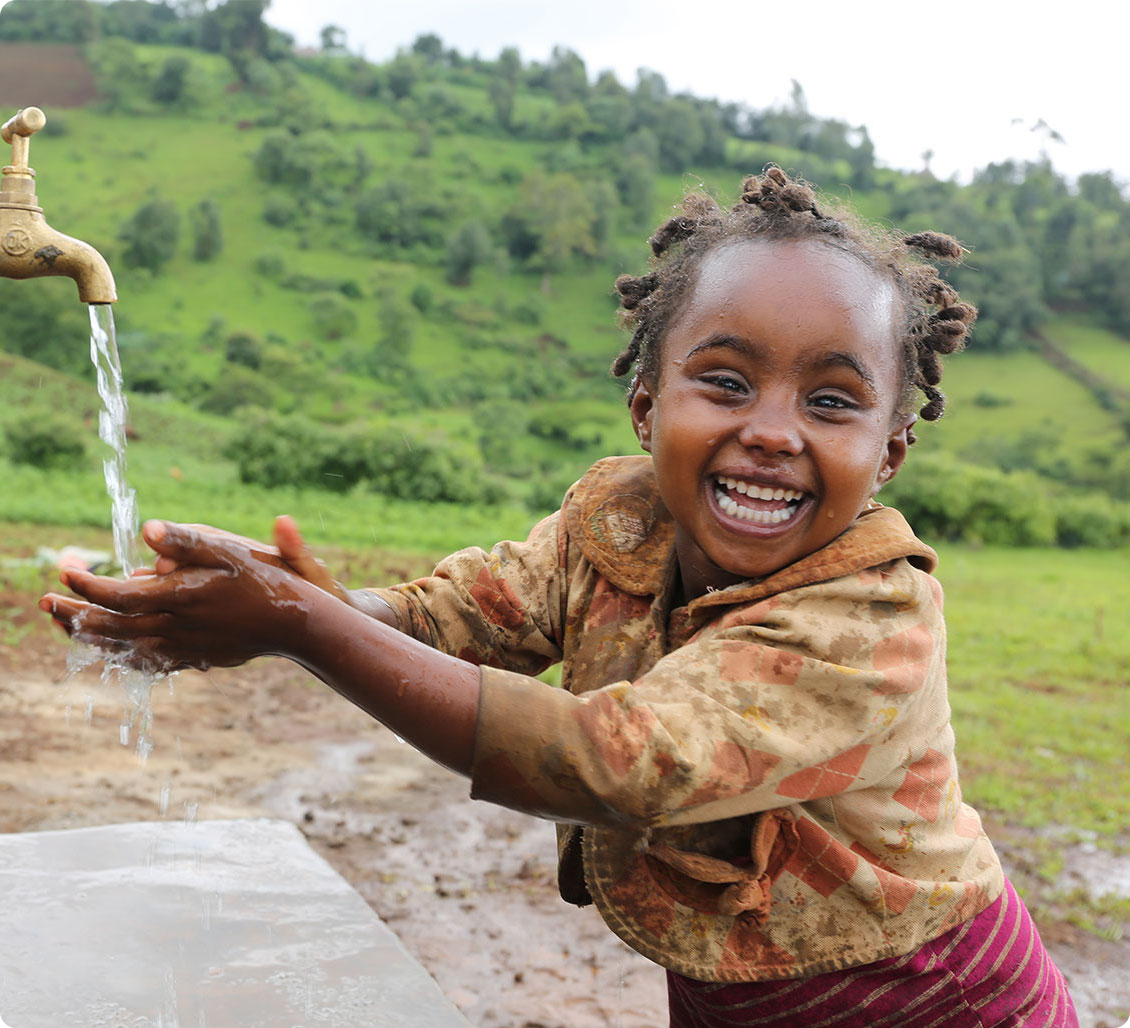
The Water Crisis
WaterAid enables the world's poorest people to gain access to clean water, decent toilets and good hygiene, allowing them to unlock their potential. By taking part and donating for the Water Challenge, you are unlocking people’s potential all around the world. Without all three, people can’t live dignified, healthy lives. With all three, they can unlock their potential, break free from poverty, and change their lives for good.
1 in 9 people worldwide do not have clean water close to home. Having access to clean water means less people will die from diarrhoeal diseases, less kids will miss out on school, and less women and girls will need to make long, dangerous journeys to collect water.

The Water Crisis
WaterAid enables the world's poorest people to gain access to clean water, decent toilets and good hygiene, allowing them to unlock their potential. By taking part and donating for the Water Challenge, you are unlocking people’s potential all around the world. Without all three, people can’t live dignified, healthy lives. With all three, they can unlock their potential, break free from poverty, and change their lives for good.
1 in 9 people worldwide do not have clean water close to home. Having access to clean water means less people will die from diarrhoeal diseases, less kids will miss out on school, and less women and girls will need to make long, dangerous journeys to collect water.

Download the following resources to help you with your challenge

Welcome to your dashboard
Where do you think you’d go if you didn’t have access to a toilet? Would you dig a hole? Would you go in a lake? Would you hide in the bushes?
Whatever your answer, it’s not pretty and it’s certainly not hygienic.
The vast majority of us in Australia might not realise it, but we’re lucky that we never have to contemplate these options. Having access to a toilet is something we take for granted. Here at WaterAid, we believe a toilet is something everyone should take for granted – at home, school, work and in public places. It is a basic human right that protects people from dangerous diseases.
Unfortunately there are still 2.3 billion people worldwide who don’t have access to a decent toilet. That’s one in three people worldwide.
A key reason why this number remains so high is that governments seldom want to talk about toilets. They might be a life saver, but talking about toilets isn’t sexy. By supporting Learn on the Loo, you are not only making a contribution to overcoming the global sanitation crisis, but you are beginning a very important conversation.
For many people who don’t have access to a toilet, their only option is open defecation. As you can probably imagine, there are many problems with doing a number one or two out in the open. For starters, it’s embarrassing and makes people – particularly women – vulnerable to harassment or attack. It’s also a major health risk; human waste can affect water sources, while flies that land on faeces are also likely to make contact with food and human skin.

WaterAid/Tom Greenwood
This can cause health problems such as diarrhoea. While it’s not uncommon for those of us in Australia to get a nasty case of diarrhoea every once in a while, it’s much easier for us to treat it by rehydrating or getting access to medical care.
But imagine you’re a young mother living in a rural village in Papua New Guinea, whose child has just had their first bout of diarrhoea, which they contracted from eating and drinking contaminated food. With the child feeling dehydrated, you’d have no choice but to give them plenty of water. But given how poor the water and sanitation facilities are in your area, you can only give them more dirty food and water. The problem thus becomes cyclical, the child becoming sick over and over again.
Situations like this mean that almost 800 children die every day because of diarrhoea. That’s one child every two minutes. That shouldn’t be normal.
The good news is that 88% of all child deaths from diarrhoeal diseases are able to be prevented through basic improvements in water, sanitation and hygiene. This is where WaterAid comes in.
WaterAid and our local partners are determined to bring clean water, decent toilets and good hygiene to everyone, everywhere by 2030. We know that with these essentials people can transform their lives, no matter how small, remote or excluded their community.
There’s more to this than simply putting a clean water source or a decent toilet into a community. We’re always looking for long-term solutions that allow us to leave communities self-sustainable. It’s important to us that people in marginalised and vulnerable communities have both the will and the knowledge to keep their toilet facilities in a good condition.
Here are a few ways that WaterAid and our local partners help more people gain access to toilets:
- We run ‘Community Led Total Sanitation’ programs in rural communities. These are interactive sessions we run with locals to help educate them about the risks of open defecation. Through these sessions, communities are able to recognise their unhygienic behaviours and become motivated to buy their own toilets from local suppliers. We find this is more cost-effective and sustainable than simply buying and setting up toilets for communities ourselves.
- We help introduce low cost sanitation products into the local markets, like the SaTo Pan. This innovative product uses much less water than other toilet solutions.
- We pay for upgrades and construction of toilet facilities at schools and some health care facilities.
- We take learnings from our partners about what works and what doesn’t, and use these experiences to guide our advocacy work. We can’t solve the global water and sanitation crisis alone, but by informing and influencing governments, we can expand our impact and reach millions more people.
Here are some more success stories relating to the work WaterAid does with toilets:
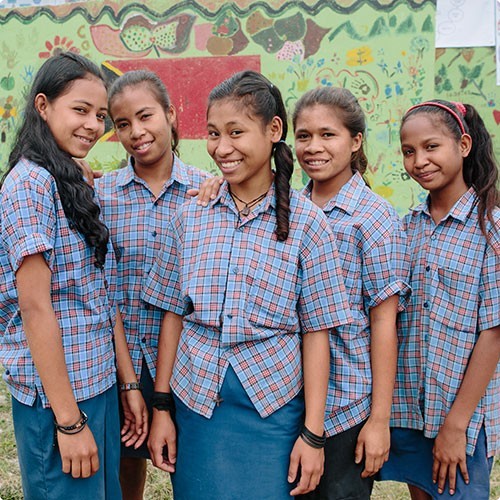
WaterAid/Tom Greenwood
Through Learn on the Loo, we’re asking participants to choose how many ‘toilets worth’ they’d like to raise for WaterAid. We’ve calculated one ‘toilets worth’ as $40, which is what it can cost to provide a family with the training and support to build their own toilet. This isn’t the only thing we’ll be using the money for, but it’s a helpful example for you to see how even a small donation can make a significant difference for people living without access to toilets.
Sign up for Learn on the Loo Donate to WaterAid Read more WaterAid toilet stories
Where do you think you’d go if you didn’t have access to a toilet? Would you dig a hole? Would you go in a lake? Would you hide in the bushes?
Whatever your answer, it’s not pretty and it’s certainly not hygienic.
The vast majority of us in Australia might not realise it, but we’re lucky that we never have to contemplate these options. Having access to a toilet is something we take for granted. Here at WaterAid, we believe a toilet is something everyone should take for granted – at home, school, work and in public places. It is a basic human right that protects people from dangerous diseases.
Unfortunately there are still 2.3 billion people worldwide who don’t have access to a decent toilet. That’s one in three people worldwide.
A key reason why this number remains so high is that governments seldom want to talk about toilets. They might be a life saver, but talking about toilets isn’t sexy. By supporting Learn on the Loo, you are not only making a contribution to overcoming the global sanitation crisis, but you are beginning a very important conversation.
For many people who don’t have access to a toilet, their only option is open defecation. As you can probably imagine, there are many problems with doing a number one or two out in the open. For starters, it’s embarrassing and makes people – particularly women – vulnerable to harassment or attack. It’s also a major health risk; human waste can affect water sources, while flies that land on faeces are also likely to make contact with food and human skin.

WaterAid/Tom Greenwood
This can cause health problems such as diarrhoea. While it’s not uncommon for those of us in Australia to get a nasty case of diarrhoea every once in a while, it’s much easier for us to treat it by rehydrating or getting access to medical care.
But imagine you’re a young mother living in a rural village in Papua New Guinea, whose child has just had their first bout of diarrhoea, which they contracted from eating and drinking contaminated food. With the child feeling dehydrated, you’d have no choice but to give them plenty of water. But given how poor the water and sanitation facilities are in your area, you can only give them more dirty food and water. The problem thus becomes cyclical, the child becoming sick over and over again.
Situations like this mean that almost 800 children die every day because of diarrhoea. That’s one child every two minutes. That shouldn’t be normal.
The good news is that 88% of all child deaths from diarrhoeal diseases are able to be prevented through basic improvements in water, sanitation and hygiene. This is where WaterAid comes in.
WaterAid and our local partners are determined to bring clean water, decent toilets and good hygiene to everyone, everywhere by 2030. We know that with these essentials people can transform their lives, no matter how small, remote or excluded their community.
There’s more to this than simply putting a clean water source or a decent toilet into a community. We’re always looking for long-term solutions that allow us to leave communities self-sustainable. It’s important to us that people in marginalised and vulnerable communities have both the will and the knowledge to keep their toilet facilities in a good condition.
Here are a few ways that WaterAid and our local partners help more people gain access to toilets:
- We run ‘Community Led Total Sanitation’ programs in rural communities. These are interactive sessions we run with locals to help educate them about the risks of open defecation. Through these sessions, communities are able to recognise their unhygienic behaviours and become motivated to buy their own toilets from local suppliers. We find this is more cost-effective and sustainable than simply buying and setting up toilets for communities ourselves.
- We help introduce low cost sanitation products into the local markets, like the SaTo Pan. This innovative product uses much less water than other toilet solutions.
- We pay for upgrades and construction of toilet facilities at schools and some health care facilities.
- We take learnings from our partners about what works and what doesn’t, and use these experiences to guide our advocacy work. We can’t solve the global water and sanitation crisis alone, but by informing and influencing governments, we can expand our impact and reach millions more people.
Here are some more success stories relating to the work WaterAid does with toilets:

WaterAid/Tom Greenwood
Through Learn on the Loo, we’re asking participants to choose how many ‘toilets worth’ they’d like to raise for WaterAid. We’ve calculated one ‘toilets worth’ as $40, which is what it can cost to provide a family with the training and support to build their own toilet. This isn’t the only thing we’ll be using the money for, but it’s a helpful example for you to see how even a small donation can make a significant difference for people living without access to toilets.
Sign up for Learn on the Loo Donate to WaterAid Read more WaterAid toilet stories
Where do you think you’d go if you didn’t have access to a toilet? Would you dig a hole? Would you go in a lake? Would you hide in the bushes?
Whatever your answer, it’s not pretty and it’s certainly not hygienic.
The vast majority of us in Australia might not realise it, but we’re lucky that we never have to contemplate these options. Having access to a toilet is something we take for granted. Here at WaterAid, we believe a toilet is something everyone should take for granted – at home, school, work and in public places. It is a basic human right that protects people from dangerous diseases.
Unfortunately there are still 2.3 billion people worldwide who don’t have access to a decent toilet. That’s one in three people worldwide.
A key reason why this number remains so high is that governments seldom want to talk about toilets. They might be a life saver, but talking about toilets isn’t sexy. By supporting Learn on the Loo, you are not only making a contribution to overcoming the global sanitation crisis, but you are beginning a very important conversation.
For many people who don’t have access to a toilet, their only option is open defecation. As you can probably imagine, there are many problems with doing a number one or two out in the open. For starters, it’s embarrassing and makes people – particularly women – vulnerable to harassment or attack. It’s also a major health risk; human waste can affect water sources, while flies that land on faeces are also likely to make contact with food and human skin.

WaterAid/Tom Greenwood
This can cause health problems such as diarrhoea. While it’s not uncommon for those of us in Australia to get a nasty case of diarrhoea every once in a while, it’s much easier for us to treat it by rehydrating or getting access to medical care.
But imagine you’re a young mother living in a rural village in Papua New Guinea, whose child has just had their first bout of diarrhoea, which they contracted from eating and drinking contaminated food. With the child feeling dehydrated, you’d have no choice but to give them plenty of water. But given how poor the water and sanitation facilities are in your area, you can only give them more dirty food and water. The problem thus becomes cyclical, the child becoming sick over and over again.
Situations like this mean that almost 800 children die every day because of diarrhoea. That’s one child every two minutes. That shouldn’t be normal.
The good news is that 88% of all child deaths from diarrhoeal diseases are able to be prevented through basic improvements in water, sanitation and hygiene. This is where WaterAid comes in.
WaterAid and our local partners are determined to bring clean water, decent toilets and good hygiene to everyone, everywhere by 2030. We know that with these essentials people can transform their lives, no matter how small, remote or excluded their community.
There’s more to this than simply putting a clean water source or a decent toilet into a community. We’re always looking for long-term solutions that allow us to leave communities self-sustainable. It’s important to us that people in marginalised and vulnerable communities have both the will and the knowledge to keep their toilet facilities in a good condition.
Here are a few ways that WaterAid and our local partners help more people gain access to toilets:
- We run ‘Community Led Total Sanitation’ programs in rural communities. These are interactive sessions we run with locals to help educate them about the risks of open defecation. Through these sessions, communities are able to recognise their unhygienic behaviours and become motivated to buy their own toilets from local suppliers. We find this is more cost-effective and sustainable than simply buying and setting up toilets for communities ourselves.
- We help introduce low cost sanitation products into the local markets, like the SaTo Pan. This innovative product uses much less water than other toilet solutions.
- We pay for upgrades and construction of toilet facilities at schools and some health care facilities.
- We take learnings from our partners about what works and what doesn’t, and use these experiences to guide our advocacy work. We can’t solve the global water and sanitation crisis alone, but by informing and influencing governments, we can expand our impact and reach millions more people.
Here are some more success stories relating to the work WaterAid does with toilets:

WaterAid/Tom Greenwood
Through Learn on the Loo, we’re asking participants to choose how many ‘toilets worth’ they’d like to raise for WaterAid. We’ve calculated one ‘toilets worth’ as $40, which is what it can cost to provide a family with the training and support to build their own toilet. This isn’t the only thing we’ll be using the money for, but it’s a helpful example for you to see how even a small donation can make a significant difference for people living without access to toilets.
Sign up for Learn on the Loo Donate to WaterAid Read more WaterAid toilet stories
Where do you think you’d go if you didn’t have access to a toilet? Would you dig a hole? Would you go in a lake? Would you hide in the bushes?
Whatever your answer, it’s not pretty and it’s certainly not hygienic.
The vast majority of us in Australia might not realise it, but we’re lucky that we never have to contemplate these options. Having access to a toilet is something we take for granted. Here at WaterAid, we believe a toilet is something everyone should take for granted – at home, school, work and in public places. It is a basic human right that protects people from dangerous diseases.
Unfortunately there are still 2.3 billion people worldwide who don’t have access to a decent toilet. That’s one in three people worldwide.
A key reason why this number remains so high is that governments seldom want to talk about toilets. They might be a life saver, but talking about toilets isn’t sexy. By supporting Learn on the Loo, you are not only making a contribution to overcoming the global sanitation crisis, but you are beginning a very important conversation.
For many people who don’t have access to a toilet, their only option is open defecation. As you can probably imagine, there are many problems with doing a number one or two out in the open. For starters, it’s embarrassing and makes people – particularly women – vulnerable to harassment or attack. It’s also a major health risk; human waste can affect water sources, while flies that land on faeces are also likely to make contact with food and human skin.

WaterAid/Tom Greenwood
This can cause health problems such as diarrhoea. While it’s not uncommon for those of us in Australia to get a nasty case of diarrhoea every once in a while, it’s much easier for us to treat it by rehydrating or getting access to medical care.
But imagine you’re a young mother living in a rural village in Papua New Guinea, whose child has just had their first bout of diarrhoea, which they contracted from eating and drinking contaminated food. With the child feeling dehydrated, you’d have no choice but to give them plenty of water. But given how poor the water and sanitation facilities are in your area, you can only give them more dirty food and water. The problem thus becomes cyclical, the child becoming sick over and over again.
Situations like this mean that almost 800 children die every day because of diarrhoea. That’s one child every two minutes. That shouldn’t be normal.
The good news is that 88% of all child deaths from diarrhoeal diseases are able to be prevented through basic improvements in water, sanitation and hygiene. This is where WaterAid comes in.
WaterAid and our local partners are determined to bring clean water, decent toilets and good hygiene to everyone, everywhere by 2030. We know that with these essentials people can transform their lives, no matter how small, remote or excluded their community.
There’s more to this than simply putting a clean water source or a decent toilet into a community. We’re always looking for long-term solutions that allow us to leave communities self-sustainable. It’s important to us that people in marginalised and vulnerable communities have both the will and the knowledge to keep their toilet facilities in a good condition.
Here are a few ways that WaterAid and our local partners help more people gain access to toilets:
- We run ‘Community Led Total Sanitation’ programs in rural communities. These are interactive sessions we run with locals to help educate them about the risks of open defecation. Through these sessions, communities are able to recognise their unhygienic behaviours and become motivated to buy their own toilets from local suppliers. We find this is more cost-effective and sustainable than simply buying and setting up toilets for communities ourselves.
- We help introduce low cost sanitation products into the local markets, like the SaTo Pan. This innovative product uses much less water than other toilet solutions.
- We pay for upgrades and construction of toilet facilities at schools and some health care facilities.
- We take learnings from our partners about what works and what doesn’t, and use these experiences to guide our advocacy work. We can’t solve the global water and sanitation crisis alone, but by informing and influencing governments, we can expand our impact and reach millions more people.
Here are some more success stories relating to the work WaterAid does with toilets:

WaterAid/Tom Greenwood
Through Learn on the Loo, we’re asking participants to choose how many ‘toilets worth’ they’d like to raise for WaterAid. We’ve calculated one ‘toilets worth’ as $40, which is what it can cost to provide a family with the training and support to build their own toilet. This isn’t the only thing we’ll be using the money for, but it’s a helpful example for you to see how even a small donation can make a significant difference for people living without access to toilets.
Sign up for Learn on the Loo Donate to WaterAid Read more WaterAid toilet stories
Raised so far
$0
Our goal
$100,000
There’s a few ways your workplace can get involved in Learn on the Loo. You may like to promote Learn on the Loo as a competitive community-building exercise, or as a tool to educate your staff or customers.
Like anyone, you can register for the event at learnontheloo.org.au. Once you’ve signed up, you can create a team for your workplace, which you can share around the office. It’s up to you and your colleagues as to whether or not you all want to learn the same thing. If you do share the same learning objective, we recommend running a quiz or ‘spelling bee’-esque competition at the end of the month to see who learned the most on the loo. If you decide to learn different things, you may like to run a ‘show and tell’ session at the end of the month for the learners to share their progress with their colleagues.
‘But what about productivity?’, you might ask. It’s a fair question. The intention of Learn on the Loo is not to prolong your toilet time, but simply to use it more efficiently. In many ways, Learn on the Loo is a challenge for the toilet dawdlers – to substitute their toilet browsing with toilet learning. But if you are feeling guilty about how much time you’re spending on the toilet, you can use a website like Give A Crap to calculate how much your company is paying you to use the toilet – which you may like to donate back to WaterAid!
Here are a few other ideas on how to make Learn on the Loo work at your workplace:
- Managers might like to use Learn on the Loo to educate their staff on a specific policy or to upskill everybody in a specific area of weakness.
- Learn on the Loo could also be a collaborative brainstorming activity, where every toilet visitor contributes an idea to a problem that’s pasted on the back of the toilet door. Make things interesting by posting a different problem in each cubicle.
- Maybe you’d like to educate your customers about something – i.e. you’re a water company that wants to teach your customers how to save water or what not to stuff down the dunny. Get in touch with us at events@wateraid.org.au if you’d like to discuss co-branded materials.
Downloads
There’s a few ways your workplace can get involved in Learn on the Loo. You may like to promote Learn on the Loo as a competitive community-building exercise, or as a tool to educate your staff or customers.
Like anyone, you can register for the event at learnontheloo.org.au. Once you’ve signed up, you can create a team for your workplace, which you can share around the office. It’s up to you and your colleagues as to whether or not you all want to learn the same thing. If you do share the same learning objective, we recommend running a quiz or ‘spelling bee’-esque competition at the end of the month to see who learned the most on the loo. If you decide to learn different things, you may like to run a ‘show and tell’ session at the end of the month for the learners to share their progress with their colleagues.
‘But what about productivity?’, you might ask. It’s a fair question. The intention of Learn on the Loo is not to prolong your toilet time, but simply to use it more efficiently. In many ways, Learn on the Loo is a challenge for the toilet dawdlers – to substitute their toilet browsing with toilet learning. But if you are feeling guilty about how much time you’re spending on the toilet, you can use a website like Give A Crap to calculate how much your company is paying you to use the toilet – which you may like to donate back to WaterAid!
Here are a few other ideas on how to make Learn on the Loo work at your workplace:
- Managers might like to use Learn on the Loo to educate their staff on a specific policy or to upskill everybody in a specific area of weakness.
- Learn on the Loo could also be a collaborative brainstorming activity, where every toilet visitor contributes an idea to a problem that’s pasted on the back of the toilet door. Make things interesting by posting a different problem in each cubicle.
- Maybe you’d like to educate your customers about something – i.e. you’re a water company that wants to teach your customers how to save water or what not to stuff down the dunny. Get in touch with us at events@wateraid.org.au if you’d like to discuss co-branded materials.
Downloads
There’s a few ways your workplace can get involved in Learn on the Loo. You may like to promote Learn on the Loo as a competitive community-building exercise, or as a tool to educate your staff or customers.
Like anyone, you can register for the event at learnontheloo.org.au. Once you’ve signed up, you can create a team for your workplace, which you can share around the office. It’s up to you and your colleagues as to whether or not you all want to learn the same thing. If you do share the same learning objective, we recommend running a quiz or ‘spelling bee’-esque competition at the end of the month to see who learned the most on the loo. If you decide to learn different things, you may like to run a ‘show and tell’ session at the end of the month for the learners to share their progress with their colleagues.
‘But what about productivity?’, you might ask. It’s a fair question. The intention of Learn on the Loo is not to prolong your toilet time, but simply to use it more efficiently. In many ways, Learn on the Loo is a challenge for the toilet dawdlers – to substitute their toilet browsing with toilet learning. But if you are feeling guilty about how much time you’re spending on the toilet, you can use a website like Give A Crap to calculate how much your company is paying you to use the toilet – which you may like to donate back to WaterAid!
Here are a few other ideas on how to make Learn on the Loo work at your workplace:
- Managers might like to use Learn on the Loo to educate their staff on a specific policy or to upskill everybody in a specific area of weakness.
- Learn on the Loo could also be a collaborative brainstorming activity, where every toilet visitor contributes an idea to a problem that’s pasted on the back of the toilet door. Make things interesting by posting a different problem in each cubicle.
- Maybe you’d like to educate your customers about something – i.e. you’re a water company that wants to teach your customers how to save water or what not to stuff down the dunny. Get in touch with us at events@wateraid.org.au if you’d like to discuss co-branded materials.
Downloads
There’s a few ways your workplace can get involved in Learn on the Loo. You may like to promote Learn on the Loo as a competitive community-building exercise, or as a tool to educate your staff or customers.
Like anyone, you can register for the event at learnontheloo.org.au. Once you’ve signed up, you can create a team for your workplace, which you can share around the office. It’s up to you and your colleagues as to whether or not you all want to learn the same thing. If you do share the same learning objective, we recommend running a quiz or ‘spelling bee’-esque competition at the end of the month to see who learned the most on the loo. If you decide to learn different things, you may like to run a ‘show and tell’ session at the end of the month for the learners to share their progress with their colleagues.
‘But what about productivity?’, you might ask. It’s a fair question. The intention of Learn on the Loo is not to prolong your toilet time, but simply to use it more efficiently. In many ways, Learn on the Loo is a challenge for the toilet dawdlers – to substitute their toilet browsing with toilet learning. But if you are feeling guilty about how much time you’re spending on the toilet, you can use a website like Give A Crap to calculate how much your company is paying you to use the toilet – which you may like to donate back to WaterAid!
Here are a few other ideas on how to make Learn on the Loo work at your workplace:
- Managers might like to use Learn on the Loo to educate their staff on a specific policy or to upskill everybody in a specific area of weakness.
- Learn on the Loo could also be a collaborative brainstorming activity, where every toilet visitor contributes an idea to a problem that’s pasted on the back of the toilet door. Make things interesting by posting a different problem in each cubicle.
- Maybe you’d like to educate your customers about something – i.e. you’re a water company that wants to teach your customers how to save water or what not to stuff down the dunny. Get in touch with us at events@wateraid.org.au if you’d like to discuss co-branded materials.
Downloads
You can never do too much learning at school, and that’s what makes ‘Learn on the Loo’ a perfect fit for your school community.
The main thing your school needs to get involved in Learn on the Loo is a packet of Blu-Tack. Pick a topic you’d like the school community to learn, print out a few resources, and stick them up on the backs of all your toilet doors. The learning objective doesn’t have to be the same for everyone, though; it can vary from school to school, from year level to year level, from class to class.
Students may also wish to print off educational posters for their home toilet so that their learning can take place around the clock, and their parents can become more invested in their learning.
As staff and students make progress learning their skills during the month, they will seek donations towards WaterAid’s lifesaving projects, which will help people in Papua New Guinea, Timor-Leste and Cambodia gain access to decent toilets. You can register a page for your school, year level, or class here. If there are multiple classes competing, you can link the pages together by creating a school team.
If the idea of running a toilet-themed activity sounds a little absurd, it’s worth taking a moment to consider that 2.3 billion people worldwide (one third of the global population) currently don’t have access to adequate sanitation facilities. Having access to a decent toilet should be normal for everybody; the fact that it’s not is something worth raising awareness and money for.
Learn On The Loo is both a fun and educational way for the staff and students of your school to engage with this critical global issue. One of the benefits of this challenge is that it provides an opportunity for you to up-skill your school community in a learning outcome relevant to you and/or the curriculum.
Here are some examples of things your students could Learn on the Loo:
- Global Citizenship – students can use their toilet time to familiarise themselves with a map of the world or the flags of the world. Feel free to download our posters, which also contains sanitation statistics for each country.
- Language learning – create a poster containing a few key phrases from the languages taught at your school
- Times tables
- Maths formulas
- The Periodic table
- Commonly misspelled words
- Grammar rules
For older year levels, you want to let your students choose their own learning objective.
To mark the end of the month, we recommend running an event at the school in which staff and students can either compete against one another (like a Spelling Bee) or show off the skill they’ve learned (like a talent show). A gold coin entrance fee can help the school raise some extra money.
If you’d like to get your school involved, sign up a school team here or email events@wateraid.org.au
Downloads
You can never do too much learning at school, and that’s what makes ‘Learn on the Loo’ a perfect fit for your school community.
The main thing your school needs to get involved in Learn on the Loo is a packet of Blu-Tack. Pick a topic you’d like the school community to learn, print out a few resources, and stick them up on the backs of all your toilet doors. The learning objective doesn’t have to be the same for everyone, though; it can vary from school to school, from year level to year level, from class to class.
Students may also wish to print off educational posters for their home toilet so that their learning can take place around the clock, and their parents can become more invested in their learning.
As staff and students make progress learning their skills during the month, they will seek donations towards WaterAid’s lifesaving projects, which will help people in Papua New Guinea, Timor-Leste and Cambodia gain access to decent toilets. You can register a page for your school, year level, or class here. If there are multiple classes competing, you can link the pages together by creating a school team.
If the idea of running a toilet-themed activity sounds a little absurd, it’s worth taking a moment to consider that 2.3 billion people worldwide (one third of the global population) currently don’t have access to adequate sanitation facilities. Having access to a decent toilet should be normal for everybody; the fact that it’s not is something worth raising awareness and money for.
Learn On The Loo is both a fun and educational way for the staff and students of your school to engage with this critical global issue. One of the benefits of this challenge is that it provides an opportunity for you to up-skill your school community in a learning outcome relevant to you and/or the curriculum.
Here are some examples of things your students could Learn on the Loo:
- Global Citizenship – students can use their toilet time to familiarise themselves with a map of the world or the flags of the world. Feel free to download our posters, which also contains sanitation statistics for each country.
- Language learning – create a poster containing a few key phrases from the languages taught at your school
- Times tables
- Maths formulas
- The Periodic table
- Commonly misspelled words
- Grammar rules
For older year levels, you want to let your students choose their own learning objective.
To mark the end of the month, we recommend running an event at the school in which staff and students can either compete against one another (like a Spelling Bee) or show off the skill they’ve learned (like a talent show). A gold coin entrance fee can help the school raise some extra money.
If you’d like to get your school involved, sign up a school team here or email events@wateraid.org.au
Downloads
You can never do too much learning at school, and that’s what makes ‘Learn on the Loo’ a perfect fit for your school community.
The main thing your school needs to get involved in Learn on the Loo is a packet of Blu-Tack. Pick a topic you’d like the school community to learn, print out a few resources, and stick them up on the backs of all your toilet doors. The learning objective doesn’t have to be the same for everyone, though; it can vary from school to school, from year level to year level, from class to class.
Students may also wish to print off educational posters for their home toilet so that their learning can take place around the clock, and their parents can become more invested in their learning.
As staff and students make progress learning their skills during the month, they will seek donations towards WaterAid’s lifesaving projects, which will help people in Papua New Guinea, Timor-Leste and Cambodia gain access to decent toilets. You can register a page for your school, year level, or class here. If there are multiple classes competing, you can link the pages together by creating a school team.
If the idea of running a toilet-themed activity sounds a little absurd, it’s worth taking a moment to consider that 2.3 billion people worldwide (one third of the global population) currently don’t have access to adequate sanitation facilities. Having access to a decent toilet should be normal for everybody; the fact that it’s not is something worth raising awareness and money for.
Learn On The Loo is both a fun and educational way for the staff and students of your school to engage with this critical global issue. One of the benefits of this challenge is that it provides an opportunity for you to up-skill your school community in a learning outcome relevant to you and/or the curriculum.
Here are some examples of things your students could Learn on the Loo:
- Global Citizenship – students can use their toilet time to familiarise themselves with a map of the world or the flags of the world. Feel free to download our posters, which also contains sanitation statistics for each country.
- Language learning – create a poster containing a few key phrases from the languages taught at your school
- Times tables
- Maths formulas
- The Periodic table
- Commonly misspelled words
- Grammar rules
For older year levels, you want to let your students choose their own learning objective.
To mark the end of the month, we recommend running an event at the school in which staff and students can either compete against one another (like a Spelling Bee) or show off the skill they’ve learned (like a talent show). A gold coin entrance fee can help the school raise some extra money.
If you’d like to get your school involved, sign up a school team here or email events@wateraid.org.au
Downloads
You can never do too much learning at school, and that’s what makes ‘Learn on the Loo’ a perfect fit for your school community.
The main thing your school needs to get involved in Learn on the Loo is a packet of Blu-Tack. Pick a topic you’d like the school community to learn, print out a few resources, and stick them up on the backs of all your toilet doors. The learning objective doesn’t have to be the same for everyone, though; it can vary from school to school, from year level to year level, from class to class.
Students may also wish to print off educational posters for their home toilet so that their learning can take place around the clock, and their parents can become more invested in their learning.
As staff and students make progress learning their skills during the month, they will seek donations towards WaterAid’s lifesaving projects, which will help people in Papua New Guinea, Timor-Leste and Cambodia gain access to decent toilets. You can register a page for your school, year level, or class here. If there are multiple classes competing, you can link the pages together by creating a school team.
If the idea of running a toilet-themed activity sounds a little absurd, it’s worth taking a moment to consider that 2.3 billion people worldwide (one third of the global population) currently don’t have access to adequate sanitation facilities. Having access to a decent toilet should be normal for everybody; the fact that it’s not is something worth raising awareness and money for.
Learn On The Loo is both a fun and educational way for the staff and students of your school to engage with this critical global issue. One of the benefits of this challenge is that it provides an opportunity for you to up-skill your school community in a learning outcome relevant to you and/or the curriculum.
Here are some examples of things your students could Learn on the Loo:
- Global Citizenship – students can use their toilet time to familiarise themselves with a map of the world or the flags of the world. Feel free to download our posters, which also contains sanitation statistics for each country.
- Language learning – create a poster containing a few key phrases from the languages taught at your school
- Times tables
- Maths formulas
- The Periodic table
- Commonly misspelled words
- Grammar rules
For older year levels, you want to let your students choose their own learning objective.
To mark the end of the month, we recommend running an event at the school in which staff and students can either compete against one another (like a Spelling Bee) or show off the skill they’ve learned (like a talent show). A gold coin entrance fee can help the school raise some extra money.
If you’d like to get your school involved, sign up a school team here or email events@wateraid.org.au
Downloads
When you register for Learn on the Loo, you commit to raising money for WaterAid and the work we do in ensuring communities have access to clean water, decent toilets, and good hygiene. Toilets are an important part of our work, which is why you can decide how many ‘toilets worth’ you’d like to raise. One toilets worth equals $40, which is roughly what it costs us to help a family to get access to a toilet. To find out more about WaterAid’s work with toilets, visit our ‘Why toilets?’ page.
But how do you raise money?
To start off, here are a few basic steps to get you going:
- Complete your registration by uploading a profile picture and writing a brief explanation as to why you’re taking the challenge. The more personalised you make your fundraising page, the more likely it is that visitors will drop you a donation.
- Join our “Learn on the Loo” Facebook group to connect with other participants. Our experiences tell us that doing this will increase your chances of raising money by roughly 37%.
- Ask someone you know to take the challenge with you. Engaging your friend or family member in a friendly rivalry will make the challenge more fun, keep you more accountable, and make you 43% more likely to raise money.
- Stay in touch with Learn on the Loo updates by liking WaterAid on Facebook, Instagram and Twitter.
Once you’ve set up the basics, it’s time to let people know that you’re taking the Learn on the Loo challenge. Our supporters are often surprised by how many of their friends and family are interested in making a donation. We’re not surprised, though – in fact, did you know that over 80% of adult Australians donate to charity ever year?
During the last fundraising event we ran, these were the 8 most effective tactics our fundraisers told us they used:
- “I asked for donations via Facebook”
- “My family donated to me”
- “I donated to myself”
- “I used the features on the fundraising website”
- “People gave me money in person”
- “I asked for donations from people in my workplace or community”
- “I asked for donations via Instagram”
- “I asked for donations via email”
Other tactics we heard worked included posting updates on Snapchat and LinkedIn, using a fundraising box, speaking in front of their school/church/workplace community, including notes in their community noticeboard/newsletter, and running a fundraising event.
“I asked for donations via Facebook”
The easiest and most popular way to fundraise is to give your friends updates about your progress over Facebook, Instagram, or your social media platform of choice. Here's an example posts:
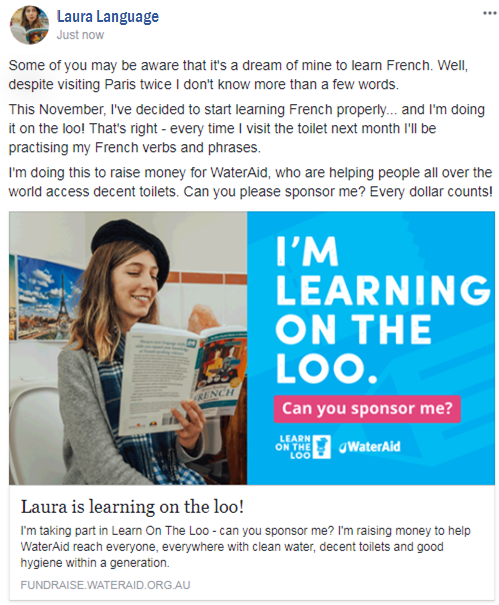
We recommend sharing a few key milestones with your friends:
- Before you begin - Immediately after you sign up, let your friends know what challenge you’ve set for yourself. They might not all donate straight away, but we bet they’ll be curious to find out what you plan on getting up to behind closed doors.
- Day 1 – Let everybody know that your Learn on the Loo challenge has begun. Remember to let your friends know how many toilets worth of cash you plan on raising.
- During the challenge – We recommend that you give your friends an update on your progress at least once or twice a week. If you’re feeling brave, take a micro break from your learning to sneak in a toilet selfie every now and then, and share it on social media. Obviously, be mindful of what you’re sharing from the dunny - there are some things that can never be unseen.
- World Toilet Day (19 November) – This is a great opportunity to reflect on the importance of decent toilets and why they’re so important. We’ll be creating some content around this time for you to share with your friends.
- The final day of the challenge – Your friends will want to know what you’ve learned on the loo, and some will have withheld their donations in anticipation of your final update. We recommend writing a blog post or sharing a video to highlight all the progress you’ve made.
Facebook isn’t just useful for public posts, though. We find that sending your friends a private note over Messenger or sharing your fundraising page in an intimate Facebook group can be very effective.
“My family donated to me”
If there’s one group of people who are willing to talk toilet habits with you, it’s probably your family. They already know how long you take, how fast you power through toilet paper, and how you always forget to turn the fan on. They may as well know what you’re doing in there!
Tell Mum, Dad, Grandpa, Grandma and your sister and brother what you’re learning on the loo and ask them to bring pride to the family name by making a donation. And if you’re sick of getting socks for Christmas, it might even be worth asking them for a donation in lieu of a present.
“I donated to myself”
You’ll be surprised how nice it feels to give yourself a donation – you feel satisfied in knowing your money is helping to change lives, while feeling the joy of both giving and receiving. Many people like to donate to themselves immediately after signing up so that they don’t have to stare at a fundraising page that reads $0.
By putting your money where your mouth is, you’re also setting a great example to family and friends by showing them you are invested in the challenge you are taking and the work WaterAid does.
If you’re not sure how much to donate to yourself, try using WaterAid UK's Give A Crap calculator to work out how much money you make each month while sitting on the toilet.
“I used the features on the fundraising website”
Once you log-in to the Learn on the Loo website, you can access your fundraising dashboard. From here, you can:
- Send emails and text messages to your friends to request sponsorship
- Write a thank-you message to everybody that donates to you
- Set custom donation amounts and create additional fundraising challenges (i.e. “Donate $20 and I’ll write you a toilet-themed poem”; “Donate $50 and I’ll mail you a toilet-paper thank you note”; “Donate $100 and I’ll do the challenge for an extra week”)
- Share your page over social media or email
- Create a team and invite your friends to join you
- Increase your fundraising target
- Change your profile picture and event cover photo
- Write and share blogs, photos, and videos
- Download fundraising resources
“People gave me money in person”
When your friends ask you what you’ve been up to, don’t just say “Not much”. Tell them what you’ve been learning on the loo. Often the best conversations we have don’t happen over the internet but in person and your friends and family may well want to donate cash to you on the spot.
Feel free to accept their generosity, so long as you don’t forget to donate the money onto your fundraising page. The easiest way to do this is to make a donation to yourself from your credit or debit card. If they’d like a tax receipt, use their name, address, and email address when making the online donation. Alternatively, you can donate the cash directly to WaterAid by using one of our Pay-in forms.
“I asked for donations from people in my workplace or community”
Don’t be embarrassed about your toilet training! Let your colleagues, your teammates, your club members, and your fellow congregants know what you’re up to. Our workplace supporters are time and time again our best fundraisers because they’re able to rally the support of their department or office around their cause.
Here are a few ways you can let people know about your challenge:
- Send an email out to everybody with your fundraising link
- Set up a WaterAid donation box on your desk
- Make a short announcement at a staff or club meeting
- Download our “I’m learning on the loo” poster and blu-tack it to the toilet doors
“I asked for donations via email”
After you sign up, you’ll start receiving handy updates from our events team every now and then. If any of them inspire you, feel free to forward them to the friends of yours you think might be interested in donating.
If you’re not sure what to write over email, here’s some sample text you can copy and paste:
Hi ____________
I bet you can’t believe what I’m doing this/next month… I’m doing a fundraising challenge from my own toilet!
For the month of November, I’ll be dedicating my toilet visits to learning a new skill to raise money for WaterAid. They're a great organisation that's helping to reach everyone, everywhere with clean water, decent toilets and good hygiene normal within a generation.
I’m hoping to raise $___ - that’s ___ toilets’ worth of money - can you please sponsor me?
My fundraising page is _______________
Thanks for your support. See you soon!
__________________
By registering for Walk For Water, you are committing to raise money for WaterAid and the work we do in ensuring communities have access to clean water, decent toilets, and good hygiene. For just $70, WaterAid can help provide water for a child, which can have a life-changing (if not life-saving) impact. Having access to a clean water source nearby means that child has less exposure to waterborne diseases and is more likely to make it to their fifth birthday. It means their mother can spend less time collecting water, and more time caring for them. And it means that child is more likely to be able to attend school.
But how do you raise money?
To start off, here are a few basic steps to get you going:
- Complete your registration by uploading a profile picture and writing a brief explanation as to why you’re taking the challenge. The more personalised you make your fundraising page, the more likely it is that visitors will drop you a donation.
- Ask someone you know to take the challenge with you. Engaging your friend or family member in a friendly rivalry will make the challenge more fun, keep you more accountable, and make you 43% more likely to raise money.
- Stay in touch with Walk for Water updates by liking WaterAid on Facebook, Instagram and Twitter.
Once you’ve set up the basics, it’s time to let people know that you’re taking the Walk for Water challenge. Our supporters are often surprised by how many of their friends and family are interested in making a donation. We’re not surprised, though – in fact, did you know that over 80% of adult Australians donate to charity ever year?
During the last fundraising event we ran, these were the 8 most effective tactics our fundraisers told us they used:
- “I asked for donations via Facebook”
- “My family donated to me”
- “I donated to myself”
- “I used the features on the fundraising website”
- “People gave me money in person”
- “I asked for donations from people in my workplace or community”
- “I asked for donations via Instagram”
- “I asked for donations via email”
Other tactics we heard worked included posting updates on Snapchat and LinkedIn, using a fundraising box, speaking in front of their school/church/workplace community, including notes in their community noticeboard/newsletter, and running a fundraising event.
“I asked for donations via Facebook”
The easiest and most popular way to fundraise is to give your friends updates about your progress over Facebook, Instagram, or your social media platform of choice.
We recommend sharing a few key milestones with your friends:
- Before you begin - Immediately after you sign up, let your friends, family and colleagues know that you’ve signed up for Walk for Water. They might not all donate straight away, but we bet they’ll be impressed by how many steps you’ll be taking. And who knows - they might even want to join you!
- Day 1 – Let everybody know that your Walk for Water challenge has begun. Remember to let your friends know what fundraising target you’ve set for yourself.
- During the challenge – The best Walk for Water fundraisers provide a daily update on how they’re finding the challenge. We recommend using the blog function on the website to let your supporters know how you went about clocking up your 10,000 steps.
- World Water Day (22 March) – This is a great opportunity to reflect on the importance of clean water and why it’s so important. We’ll be creating some content around this time for you to share with your friends, so keep your eyes on our social media pages.
- The final day of the challenge – Your friends, family and colleagues, will be keen to know whether you completed your challenge. They’ll also be keen to know if you learned anything along the way.
Facebook isn’t just useful for public posts, though. We find that sending your friends a private note over Messenger or sharing your fundraising page in an intimate Facebook group can be very effective.
“My family donated to me”
If there’s one group of people you can count on to support you, it’s probably your family. Tell Mum, Dad, Grandpa, Grandma and your sister and brother how far you'll be walking for water and ask them to bring pride to the family name by making a donation. And if you’re sick of getting socks for for your birthday, it might even be worth asking them for a donation in lieu of a present.
“I donated to myself”
You’ll be surprised how nice it feels to give yourself a donation – you feel satisfied in knowing your money is helping to change lives, while feeling the joy of both giving and receiving. Many people like to donate to themselves immediately after signing up so that they don’t have to stare at a fundraising page that reads $0.
By putting your money where your mouth is, you’re also setting a great example to family and friends by showing them you are invested in the challenge you are taking and the work WaterAid does.
“I used the features on the fundraising website”
Once you log-in to the Walk for Water website, you can access your fundraising dashboard. From here, you can:
- Send emails and text messages to your friends to request sponsorship
- Write a thank-you message to everybody that donates to you
- Set custom donation amounts and create additional fundraising challenges (i.e. “Donate $20 and I’ll write you a water-themed poem”; “Donate $100 and I’ll do the challenge for an extra week”)
- Share your page over social media or email
- Create a team and invite your friends to join you
- Increase your fundraising target
- Change your profile picture and event cover photo
- Write and share blogs, photos, and videos
- Download fundraising resources
“People gave me money in person”
When your friends ask you what you’ve been up to, don’t just say “Not much”. Tell them that you're planning on walking 10,000 steps a day for five days! Often the best conversations we have don’t happen over the internet but in person and your friends and family may well want to donate cash to you on the spot.
Feel free to accept their generosity, so long as you don’t forget to donate the money onto your fundraising page. The easiest way to do this is to make a donation to yourself from your credit or debit card. If they’d like a tax receipt, use their name, address, and email address when making the online donation. Alternatively, you can donate the cash directly to WaterAid by using one of our Pay-in forms.
“I asked for donations from people in my workplace or community”
Let your colleagues, your teammates, your club members, and your fellow congregants know what you’re up to. Our workplace supporters are time and time again our best fundraisers because they’re able to rally the support of their department or office around their cause.
Here are a few ways you can let people know about your challenge:
- Send an email out to everybody with your fundraising link
- Set up a WaterAid donation box on your desk
- Make a short announcement at a staff or club meeting
“I asked for donations via email”
After you sign up, you’ll start receiving handy updates from our events team every now and then. If any of them inspire you, feel free to forward them to the friends of yours you think might be interested in donating.
If you’re not sure what to write over email, here’s some sample text you can copy and paste:
Hi ________
Very soon I’ll be taking a challenge to raise money for WaterAid, a not-for-profit organisation that is helping people get access to clean water.
I’ll be getting involved in Walk for Water, which means I’ll be walking 10,000 steps a day between 19-23 March. That’s roughly 100 minutes a day of walking!
Can you believe that in Africa and Asia, women have to walk an average of 6 kilometres to collect water? To address this, WaterAid is helping more communities around the world get access to water sources close to home. You can help WaterAid by sponsoring me at _______________
Thanks
(Your name)
When you register for Learn on the Loo, you commit to raising money for WaterAid and the work we do in ensuring communities have access to clean water, decent toilets, and good hygiene. Toilets are an important part of our work, which is why you can decide how many ‘toilets worth’ you’d like to raise. One toilets worth equals $40, which is roughly what it costs us to help a family to get access to a toilet. To find out more about WaterAid’s work with toilets, visit our ‘Why toilets?’ page.
But how do you raise money?
To start off, here are a few basic steps to get you going:
- Complete your registration by uploading a profile picture and writing a brief explanation as to why you’re taking the challenge. The more personalised you make your fundraising page, the more likely it is that visitors will drop you a donation.
- Join our “Learn on the Loo” Facebook group to connect with other participants. Our experiences tell us that doing this will increase your chances of raising money by roughly 37%.
- Ask someone you know to take the challenge with you. Engaging your friend or family member in a friendly rivalry will make the challenge more fun, keep you more accountable, and make you 43% more likely to raise money.
- Stay in touch with Learn on the Loo updates by liking WaterAid on Facebook, Instagram and Twitter.
Once you’ve set up the basics, it’s time to let people know that you’re taking the Learn on the Loo challenge. Our supporters are often surprised by how many of their friends and family are interested in making a donation. We’re not surprised, though – in fact, did you know that over 80% of adult Australians donate to charity ever year?
During the last fundraising event we ran, these were the 8 most effective tactics our fundraisers told us they used:
- “I asked for donations via Facebook”
- “My family donated to me”
- “I donated to myself”
- “I used the features on the fundraising website”
- “People gave me money in person”
- “I asked for donations from people in my workplace or community”
- “I asked for donations via Instagram”
- “I asked for donations via email”
Other tactics we heard worked included posting updates on Snapchat and LinkedIn, using a fundraising box, speaking in front of their school/church/workplace community, including notes in their community noticeboard/newsletter, and running a fundraising event.
“I asked for donations via Facebook”
The easiest and most popular way to fundraise is to give your friends updates about your progress over Facebook, Instagram, or your social media platform of choice. Here's an example posts:

We recommend sharing a few key milestones with your friends:
- Before you begin - Immediately after you sign up, let your friends know what challenge you’ve set for yourself. They might not all donate straight away, but we bet they’ll be curious to find out what you plan on getting up to behind closed doors.
- Day 1 – Let everybody know that your Learn on the Loo challenge has begun. Remember to let your friends know how many toilets worth of cash you plan on raising.
- During the challenge – We recommend that you give your friends an update on your progress at least once or twice a week. If you’re feeling brave, take a micro break from your learning to sneak in a toilet selfie every now and then, and share it on social media. Obviously, be mindful of what you’re sharing from the dunny - there are some things that can never be unseen.
- World Toilet Day (19 November) – This is a great opportunity to reflect on the importance of decent toilets and why they’re so important. We’ll be creating some content around this time for you to share with your friends.
- The final day of the challenge – Your friends will want to know what you’ve learned on the loo, and some will have withheld their donations in anticipation of your final update. We recommend writing a blog post or sharing a video to highlight all the progress you’ve made.
Facebook isn’t just useful for public posts, though. We find that sending your friends a private note over Messenger or sharing your fundraising page in an intimate Facebook group can be very effective.
“My family donated to me”
If there’s one group of people who are willing to talk toilet habits with you, it’s probably your family. They already know how long you take, how fast you power through toilet paper, and how you always forget to turn the fan on. They may as well know what you’re doing in there!
Tell Mum, Dad, Grandpa, Grandma and your sister and brother what you’re learning on the loo and ask them to bring pride to the family name by making a donation. And if you’re sick of getting socks for Christmas, it might even be worth asking them for a donation in lieu of a present.
“I donated to myself”
You’ll be surprised how nice it feels to give yourself a donation – you feel satisfied in knowing your money is helping to change lives, while feeling the joy of both giving and receiving. Many people like to donate to themselves immediately after signing up so that they don’t have to stare at a fundraising page that reads $0.
By putting your money where your mouth is, you’re also setting a great example to family and friends by showing them you are invested in the challenge you are taking and the work WaterAid does.
If you’re not sure how much to donate to yourself, try using WaterAid UK's Give A Crap calculator to work out how much money you make each month while sitting on the toilet.
“I used the features on the fundraising website”
Once you log-in to the Learn on the Loo website, you can access your fundraising dashboard. From here, you can:
- Send emails and text messages to your friends to request sponsorship
- Write a thank-you message to everybody that donates to you
- Set custom donation amounts and create additional fundraising challenges (i.e. “Donate $20 and I’ll write you a toilet-themed poem”; “Donate $50 and I’ll mail you a toilet-paper thank you note”; “Donate $100 and I’ll do the challenge for an extra week”)
- Share your page over social media or email
- Create a team and invite your friends to join you
- Increase your fundraising target
- Change your profile picture and event cover photo
- Write and share blogs, photos, and videos
- Download fundraising resources
“People gave me money in person”
When your friends ask you what you’ve been up to, don’t just say “Not much”. Tell them what you’ve been learning on the loo. Often the best conversations we have don’t happen over the internet but in person and your friends and family may well want to donate cash to you on the spot.
Feel free to accept their generosity, so long as you don’t forget to donate the money onto your fundraising page. The easiest way to do this is to make a donation to yourself from your credit or debit card. If they’d like a tax receipt, use their name, address, and email address when making the online donation. Alternatively, you can donate the cash directly to WaterAid by using one of our Pay-in forms.
“I asked for donations from people in my workplace or community”
Don’t be embarrassed about your toilet training! Let your colleagues, your teammates, your club members, and your fellow congregants know what you’re up to. Our workplace supporters are time and time again our best fundraisers because they’re able to rally the support of their department or office around their cause.
Here are a few ways you can let people know about your challenge:
- Send an email out to everybody with your fundraising link
- Set up a WaterAid donation box on your desk
- Make a short announcement at a staff or club meeting
- Download our “I’m learning on the loo” poster and blu-tack it to the toilet doors
“I asked for donations via email”
After you sign up, you’ll start receiving handy updates from our events team every now and then. If any of them inspire you, feel free to forward them to the friends of yours you think might be interested in donating.
If you’re not sure what to write over email, here’s some sample text you can copy and paste:
Hi ____________
I bet you can’t believe what I’m doing this/next month… I’m doing a fundraising challenge from my own toilet!
For the month of November, I’ll be dedicating my toilet visits to learning a new skill to raise money for WaterAid. They're a great organisation that's helping to reach everyone, everywhere with clean water, decent toilets and good hygiene normal within a generation.
I’m hoping to raise $___ - that’s ___ toilets’ worth of money - can you please sponsor me?
My fundraising page is _______________
Thanks for your support. See you soon!
__________________
By registering for The Water Challenge, you are committing to raise money for WaterAid and the work we do in ensuring communities have access to clean water, decent toilets, and good hygiene. For just $70, WaterAid can help provide water for a child, which can have a life-changing (if not life-saving) impact. Having access to a clean water source nearby means that child has less exposure to waterborne diseases and is more likely to make it to their fifth birthday. It means their mother can spend less time collecting water, and more time caring for them. And it means that child is more likely to be able to attend school.
But how do you raise money?
To start off, here are a few basic steps to get you going:
- Complete your registration by uploading a profile picture and writing a brief explanation as to why you’re taking the challenge. The more personalised you make your fundraising page, the more likely it is that visitors will drop you a donation.
- Ask someone you know to take the challenge with you. Engaging your friend or family member in a friendly rivalry will make the challenge more fun, keep you more accountable, and make you 43% more likely to raise money.
- Stay in touch with Water Challenge updates by liking WaterAid on Facebook, Instagram and Twitter.
Once you’ve set up the basics, it’s time to let people know that you’re taking the Water Challenge. Our supporters are often surprised by how many of their friends and family are interested in making a donation. We’re not surprised, though – in fact, did you know that over 80% of adult Australians donate to charity ever year?
During last year's Water Challenge, these were the 8 most effective tactics our fundraisers told us they used:
- “I asked for donations via Facebook”
- “My family donated to me”
- “I donated to myself”
- “I used the features on the fundraising website”
- “People gave me money in person”
- “I asked for donations from people in my workplace or community”
- “I asked for donations via Instagram”
- “I asked for donations via email”
Other tactics we heard worked included posting updates on Snapchat and LinkedIn, using a fundraising box, speaking in front of their school/church/workplace community, including notes in their community noticeboard/newsletter, and running a fundraising event.
“I asked for donations via Facebook”
The easiest and most popular way to fundraise is to give your friends updates about your progress over Facebook, Instagram, or your social media platform of choice.
We recommend sharing a few key milestones with your friends:
- Before you begin - Immediately after you sign up, let your friends know that you’ve committed to drinking just water during March. Your friends might not all donate straight away, but they’ll certainly be impressed by your decision to give up your favourite drinks for the month. And who knows – they might even want to join you!
- Day 1 – Let everybody know that your Water Challenge has begun. Remember to let your friends know how much you’d like to fundraise.
- During the challenge – It’s good to keep your friends updated on your progress at least once or twice a week. We recommend sharing updates in those moments when the challenge is extra difficult, like when your colleagues are grabbing coffee without you, or when you’re stuck on tap water at the pub.
- World Water Day (22 March) – This is a great opportunity to reflect on the importance of clean water and why it’s so important. We’ll be creating some content around this time for you to share with your friends, so keep your eyes on our social media pages.
The final day of the challenge – Your friends will want to know whether you’ve managed to last the month without your favourite drinks. We recommend writing a blog post or sharing a video to celebrate your achievement.
Facebook isn’t just useful for public posts, though. We find that sending your friends a private note over Messenger or sharing your fundraising page in an intimate Facebook group can be very effective.
“My family donated to me”
If there’s one group of people you can count on to support you, it’s probably your family. Tell Mum, Dad, Grandpa, Grandma and your sister and brother what drinks you'll be giving up in March and ask them to bring pride to the family name by making a donation. And if you’re sick of getting socks for for your birthday, it might even be worth asking them for a donation in lieu of a present.
“I donated to myself”
You’ll be surprised how nice it feels to give yourself a donation – you feel satisfied in knowing your money is helping to change lives, while feeling the joy of both giving and receiving. Many people like to donate to themselves immediately after signing up so that they don’t have to stare at a fundraising page that reads $0.
By putting your money where your mouth is, you’re also setting a great example to family and friends by showing them you are invested in the challenge you are taking and the work WaterAid does.
“I used the features on the fundraising website”
Once you log-in to the Water Challenge website, you can access your fundraising dashboard. From here, you can:
- Send emails and text messages to your friends to request sponsorship
- Write a thank-you message to everybody that donates to you
- Set custom donation amounts and create additional fundraising challenges (i.e. “Donate $20 and I’ll write you a water-themed poem”; “Donate $100 and I’ll do the challenge for an extra week”)
- Share your page over social media or email
- Create a team and invite your friends to join you
- Increase your fundraising target
- Change your profile picture and event cover photo
- Write and share blogs, photos, and videos
- Download fundraising resources
“People gave me money in person”
When your friends ask you what you’ve been up to, don’t just say “Not much”. Tell them that you've committed to give up your favourite drinks for all of March! Often the best conversations we have don’t happen over the internet but in person and your friends and family may well want to donate cash to you on the spot.
Feel free to accept their generosity, so long as you don’t forget to donate the money onto your fundraising page. The easiest way to do this is to make a donation to yourself from your credit or debit card. If they’d like a tax receipt, use their name, address, and email address when making the online donation. Alternatively, you can donate the cash directly to WaterAid by using one of our Pay-in forms.
“I asked for donations from people in my workplace or community”
Let your colleagues, your teammates, your club members, and your fellow congregants know what you’re up to. Our workplace supporters are time and time again our best fundraisers because they’re able to rally the support of their department or office around their cause.
Here are a few ways you can let people know about your challenge:
- Send an email out to everybody with your fundraising link
- Set up a WaterAid donation box on your desk
- Make a short announcement at a staff or club meeting
“I asked for donations via email”
After you sign up, you’ll start receiving handy updates from our events team every now and then. If any of them inspire you, feel free to forward them to the friends of yours you think might be interested in donating.
If you’re not sure what to write over email, here’s some sample text you can copy and paste:
Hi ________
Very soon I’ll be taking a challenge to raise money for WaterAid, a not-for-profit organisation that is helping people get access to clean water.
I’ll be getting involved in the Water Challenge, which means I’ll be making water by only beverage for the month of March. That means no coffee, no tea, no alcohol and no soft drinks. Just water!
Can you believe that 1 in 9 people worldwide don't have access to a clean water source close to home? This has really serious consequences on people's health, wellbeing, and their ability to attend school. WaterAid is working to change this and you can help WaterAid by sponsoring me at _______________
Thanks
(Your name)
By registering for The Water Challenge, you are committing to raise money for WaterAid and the work we do in ensuring communities have access to clean water, decent toilets, and good hygiene. For just $70, WaterAid can help provide water for a child, which can have a life-changing (if not life-saving) impact. Having access to a clean water source nearby means that child has less exposure to waterborne diseases and is more likely to make it to their fifth birthday. It means their mother can spend less time collecting water, and more time caring for them. And it means that
But how do you raise money?
To start off, here are a few basic steps to get you going:
- Complete your registration by uploading a profile picture and writing a brief explanation as to why you’re taking the challenge. The more
personalised you make your fundraising page, the more likely it is that visitors will drop you a donation. - Ask someone you know to take the challenge with you. Engaging your friend or family member in a friendly rivalry will make the challenge more fun, keep you more accountable, and make you 43% more likely to raise money.
- Stay in touch with Water Challenge updates by liking WaterAid on Facebook, Instagram
and Twitter.
Once you’ve set up the basics, it’s time to let people know that you’re taking the Water Challenge. Our supporters are often surprised by how many of their friends and family are interested in making a donation. We’re not surprised, though – in fact, did you know that over 80% of adult Australians donate to charity
During last year's Water Challenge, these were the 8 most effective tactics our fundraisers told us they used:
By registering for Walk For Water, you are committing to raise money for WaterAid and the work we do in ensuring communities have access to clean water, decent toilets, and good hygiene. For just $70, WaterAid can help provide water for a child, which can have a life-changing (if not life-saving) impact. Having access to a clean water source nearby means that child has less exposure to waterborne diseases and is more likely to make it to their fifth birthday. It means their mother can spend less time collecting water, and more time caring for them. And it means that child is more likely to be able to attend school.
But how do you raise money?
To start off, here are a few basic steps to get you going:
- Complete your registration by uploading a profile picture and writing a brief explanation as to why you’re taking the challenge. The more personalised you make your fundraising page, the more likely it is that visitors will drop you a donation.
- Ask someone you know to take the challenge with you. Engaging your friend or family member in a friendly rivalry will make the challenge more fun, keep you more accountable, and make you 43% more likely to raise money.
- Stay in touch with Walk for Water updates by liking WaterAid on Facebook, Instagram and Twitter.
Once you’ve set up the basics, it’s time to let people know that you’re taking the Walk for Water challenge. Our supporters are often surprised by how many of their friends and family are interested in making a donation. We’re not surprised, though – in fact, did you know that over 80% of adult Australians donate to charity ever year?
During the last fundraising event we ran, these were the 8 most effective tactics our fundraisers told us they used:
- “I asked for donations via Facebook”
- “My family donated to me”
- “I donated to myself”
- “I used the features on the fundraising website”
- “People gave me money in person”
- “I asked for donations from people in my workplace or community”
- “I asked for donations via Instagram”
- “I asked for donations via email”
Other tactics we heard worked included posting updates on Snapchat and LinkedIn, using a fundraising box, speaking in front of their school/church/workplace community, including notes in their community noticeboard/newsletter, and running a fundraising event.
“I asked for donations via Facebook”
The easiest and most popular way to fundraise is to give your friends updates about your progress over Facebook, Instagram, or your social media platform of choice.
We recommend sharing a few key milestones with your friends:
- Before you begin - Immediately after you sign up, let your friends, family and colleagues know that you’ve signed up for Walk for Water. They might not all donate straight away, but we bet they’ll be impressed by how many steps you’ll be taking. And who knows - they might even want to join you!
- Day 1 – Let everybody know that your Walk for Water challenge has begun. Remember to let your friends know what fundraising target you’ve set for yourself.
- During the challenge – The best Walk for Water fundraisers provide a daily update on how they’re finding the challenge. We recommend using the blog function on the website to let your supporters know how you went about clocking up your 10,000 steps.
- World Water Day (22 March) – This is a great opportunity to reflect on the importance of clean water and why it’s so important. We’ll be creating some content around this time for you to share with your friends, so keep your eyes on our social media pages.
- The final day of the challenge – Your friends, family and colleagues, will be keen to know whether you completed your challenge. They’ll also be keen to know if you learned anything along the way.
Facebook isn’t just useful for public posts, though. We find that sending your friends a private note over Messenger or sharing your fundraising page in an intimate Facebook group can be very effective.
“My family donated to me”
If there’s one group of people you can count on to support you, it’s probably your family. Tell Mum, Dad, Grandpa, Grandma and your sister and brother how far you'll be walking for water and ask them to bring pride to the family name by making a donation. And if you’re sick of getting socks for for your birthday, it might even be worth asking them for a donation in lieu of a present.
“I donated to myself”
You’ll be surprised how nice it feels to give yourself a donation – you feel satisfied in knowing your money is helping to change lives, while feeling the joy of both giving and receiving. Many people like to donate to themselves immediately after signing up so that they don’t have to stare at a fundraising page that reads $0.
By putting your money where your mouth is, you’re also setting a great example to family and friends by showing them you are invested in the challenge you are taking and the work WaterAid does.
“I used the features on the fundraising website”
Once you log-in to the Walk for Water website, you can access your fundraising dashboard. From here, you can:
- Send emails and text messages to your friends to request sponsorship
- Write a thank-you message to everybody that donates to you
- Set custom donation amounts and create additional fundraising challenges (i.e. “Donate $20 and I’ll write you a water-themed poem”; “Donate $100 and I’ll do the challenge for an extra week”)
- Share your page over social media or email
- Create a team and invite your friends to join you
- Increase your fundraising target
- Change your profile picture and event cover photo
- Write and share blogs, photos, and videos
- Download fundraising resources
“People gave me money in person”
When your friends ask you what you’ve been up to, don’t just say “Not much”. Tell them that you're planning on walking 10,000 steps a day for five days! Often the best conversations we have don’t happen over the internet but in person and your friends and family may well want to donate cash to you on the spot.
Feel free to accept their generosity, so long as you don’t forget to donate the money onto your fundraising page. The easiest way to do this is to make a donation to yourself from your credit or debit card. If they’d like a tax receipt, use their name, address, and email address when making the online donation. Alternatively, you can donate the cash directly to WaterAid by using one of our Pay-in forms.
“I asked for donations from people in my workplace or community”
Let your colleagues, your teammates, your club members, and your fellow congregants know what you’re up to. Our workplace supporters are time and time again our best fundraisers because they’re able to rally the support of their department or office around their cause.
Here are a few ways you can let people know about your challenge:
- Send an email out to everybody with your fundraising link
- Set up a WaterAid donation box on your desk
- Make a short announcement at a staff or club meeting
“I asked for donations via email”
After you sign up, you’ll start receiving handy updates from our events team every now and then. If any of them inspire you, feel free to forward them to the friends of yours you think might be interested in donating.
If you’re not sure what to write over email, here’s some sample text you can copy and paste:
Hi ________
Very soon I’ll be taking a challenge to raise money for WaterAid, a not-for-profit organisation that is helping people get access to clean water.
I’ll be getting involved in Walk for Water, which means I’ll be walking 10,000 steps a day between 18-22 March. That’s roughly 100 minutes a day of walking!
Can you believe that in Africa and Asia, women have to walk an average of 6 kilometres to collect water? To address this, WaterAid is helping more communities around the world get access to water sources close to home. You can help WaterAid by sponsoring me at _______________
Thanks
(Your name)
By registering for The Water Challenge, you are committing to raise money for WaterAid and the work we do in ensuring communities have access to clean water, decent toilets, and good hygiene. For just $70, WaterAid can help provide water for a child, which can have a life-changing (if not life-saving) impact. Having access to a clean water source nearby means that child has less exposure to waterborne diseases and is more likely to make it to their fifth birthday. It means their mother can spend less time collecting water, and more time caring for them. And it means that
But how do you raise money?
To start off, here are a few basic steps to get you going:
- Complete your registration by uploading a profile picture and writing a brief explanation as to why you’re taking the challenge. The more
personalised you make your fundraising page, the more likely it is that visitors will drop you a donation. - Ask someone you know to take the challenge with you. Engaging your friend or family member in a friendly rivalry will make the challenge more fun, keep you more accountable, and make you 43% more likely to raise money.
- Stay in touch with Water Challenge updates by liking WaterAid on Facebook, Instagram
and Twitter.
Once you’ve set up the basics, it’s time to let people know that you’re taking the Water Challenge. Our supporters are often surprised by how many of their friends and family are interested in making a donation. We’re not surprised, though – in fact, did you know that over 80% of adult Australians donate to charity
During last year's Water Challenge, these were the 8 most effective tactics our fundraisers told us they used:
By registering for The Water Challenge, you are committing to raise money for WaterAid and the work we do in ensuring communities have access to clean water, decent toilets, and good hygiene. For just $70, WaterAid can help provide water for a child, which can have a life-changing (if not life-saving) impact. Having access to a clean water source nearby means that child has less exposure to waterborne diseases and is more likely to make it to their fifth birthday. It means their mother can spend less time collecting water, and more time caring for them. And it means that
But how do you raise money?
To start off, here are a few basic steps to get you going:
- Complete your registration by uploading a profile picture and writing a brief explanation as to why you’re taking the challenge. The more
personalised you make your fundraising page, the more likely it is that visitors will drop you a donation. - Ask someone you know to take the challenge with you. Engaging your friend or family member in a friendly rivalry will make the challenge more fun, keep you more accountable, and make you 43% more likely to raise money.
- Stay in touch with Water Challenge updates by liking WaterAid on Facebook, Instagram
and Twitter.
Once you’ve set up the basics, it’s time to let people know that you’re taking the Water Challenge. Our supporters are often surprised by how many of their friends and family are interested in making a donation. We’re not surprised, though – in fact, did you know that over 80% of adult Australians donate to charity
During last year's Water Challenge, these were the 8 most effective tactics our fundraisers told us they used:
When you register to take part in Walk For Water, you are committing to raise money for WaterAid and the work we do in ensuring communities have access to clean water, decent toilets, and good hygiene. For just $70, WaterAid can help provide water for a child, which can have a life-changing (if not life-saving) impact. Having access to a clean water source nearby means that child has less exposure to waterborne diseases and is more likely to make it to their fifth birthday. It means their mother can spend less time collecting water, and more time caring for them. And it means that child is more likely to be able to attend school.
But how does it work?
In just 3 easy steps you can get started
Step 1: Complete your registration
The more personalised you make your fundraising page, the more likely it is that visitors will support you. So don't forget to upload a photo and write a note on why you are a supporting WaterAid.
Step 2: Get others involved
Ask your friends, family & collegues to join you. Taking part as a team is a great way to stay motivated.
Step 3: Stay in touch with Walk for Water
Become part of the community. To stay in touch with others taking part make sure you like us on Facebook, Instagram and Twitter.
What's Next
it’s time to let people know that you are taking part in Walk for Water!
Our supporters are often surprised by how many of their friends and family are interested in making a donation. We’re not surprised, though – in fact, did you know that over 80% of adult Australians donate to charity ever year?
During our last fundraising event we ran, these were the most effective tactics our fundraisers told us they used:
- "I asked for donations through social media"
- "My family donated to me"
- “I used the features on the fundraising website”
- “I asked for donations from people at my work”
- “I asked for donations through email”
Social Media
The easiest and most popular way to fundraise is to give your friends updates about your progress over Facebook, Instagram, or your social media platform of choice.
We recommend sharing a few key milestones with your friends:
- Post! Post! Post!: Let your friends, family and colleagues know that you’ve signed up for Walk for Water. And who knows - they might even want to join you!
- Day 1: Let everybody know that your Walk for Water challenge has begun. Remember to let your friends know what fundraising target you’ve set for yourself.
- During the challenge: The best Walk for Water fundraisers provide a daily update on how they’re finding the challenge.
- After Walk for Water: Let people know how you went and thank everyone that supported you.
Facebook isn’t just useful for public posts, though. We find that sending your friends a private note over Messenger or sharing your fundraising page in an intimate Facebook group can be very effective.
Fundraising Page
Through your fundraising dashboard when logged in to the Walk for Water website you can:
- Send emails and text messages to your friends to request sponsorship
- Write a thank-you message to everybody that donates to you
- Set custom donation amounts and create additional fundraising challenges
- Share your page via social media and email
- Create a team and invite your friends to join you
- Set your fundraising target
- Add a personalised profile picture and cover photo
- Share blogs, photos, and videos
- Download fundraising resources
Some poeple may wish to donate in person in either cash or cheque. Feel free to accept their generosity, so long as you don’t forget to donate the money onto your fundraising page. The easiest way to do this is to make a donation to yourself from your credit or debit card. If they’d like a tax receipt, use their name, address, and email address when making the online donation. Alternatively, you can donate the cash directly to WaterAid by using one of our pay in forms found under downloads.
Head to the downloads page to find heaps of resources to help you keep on track this Walk for Water!
The Water Challenge is a fantastic opportunity to build some healthy habits for yourself AND raise money for WaterAid. Your fundraising supports the work we do in ensuring communities have access to clean water, decent toilets, and good hygiene.
So here’s how to make the most out of your fundraising efforts:
The Water Challenge is a fantastic opportunity to build some healthy habits for yourself AND raise money for WaterAid. Your fundraising supports the work we do in ensuring communities have access to clean water, decent toilets, and good hygiene.
So here’s how to make the most out of your fundraising efforts:
The Water Challenge is a fantastic opportunity to build some healthy habits for yourself AND raise money for WaterAid. Your fundraising supports the work we do in ensuring communities have access to clean water, decent toilets, and good hygiene.
So here’s how to make the most out of your fundraising efforts:
The Water Challenge is a fantastic opportunity to build some healthy habits for yourself AND raise money for WaterAid. Your fundraising supports the work we do in ensuring communities have access to clean water, decent toilets, and good hygiene.
So here’s how to make the most out of your fundraising efforts:
The Water Challenge is a fantastic opportunity to build some healthy habits for yourself AND raise money for WaterAid. Your fundraising supports the work we do in ensuring communities have access to clean water, decent toilets, and good hygiene.
So here’s how to make the most out of your fundraising efforts:
Recent Articles

How Drinking Just Water for 31 Days Coul...

Five reasons to drink more water

Water Changes Lives. Here’s Why You Dr...

Why you should give up alcohol for one m...

How Drinking Water for 1 Month Can Impro...

How environmentally friendly are your fa...

What to expect when giving up caffeine

The best and worst drinks for your teeth

H2 Hero of the week- Rachelle Aitken

What happens to your body when you give ...

Seven Skin benefits of drinking water
